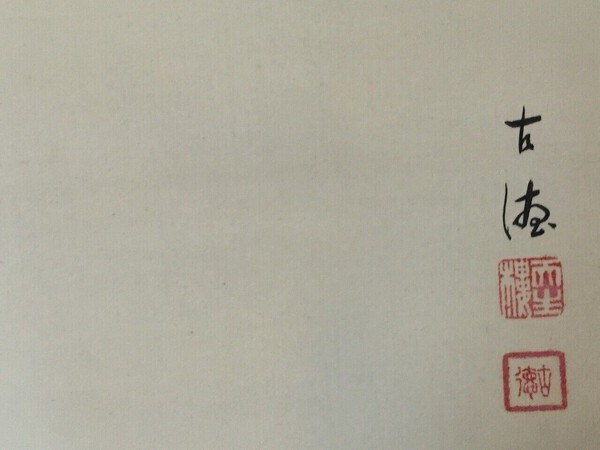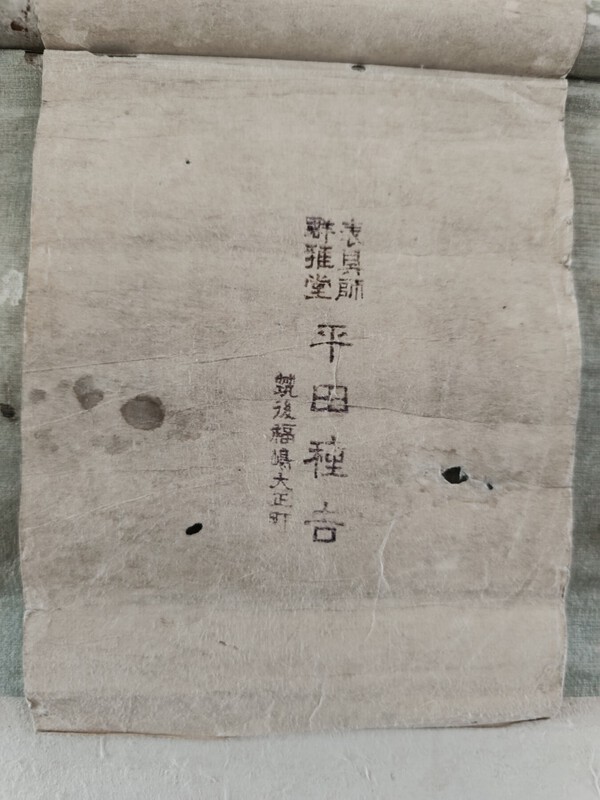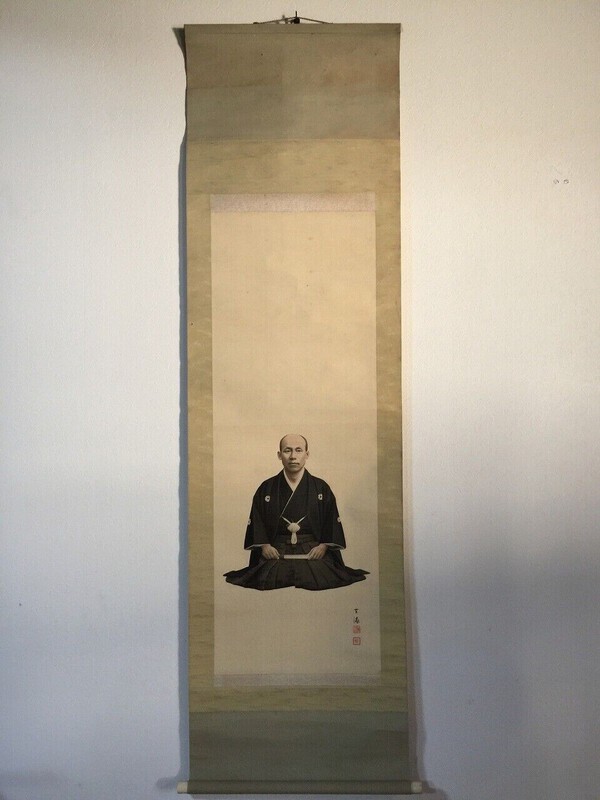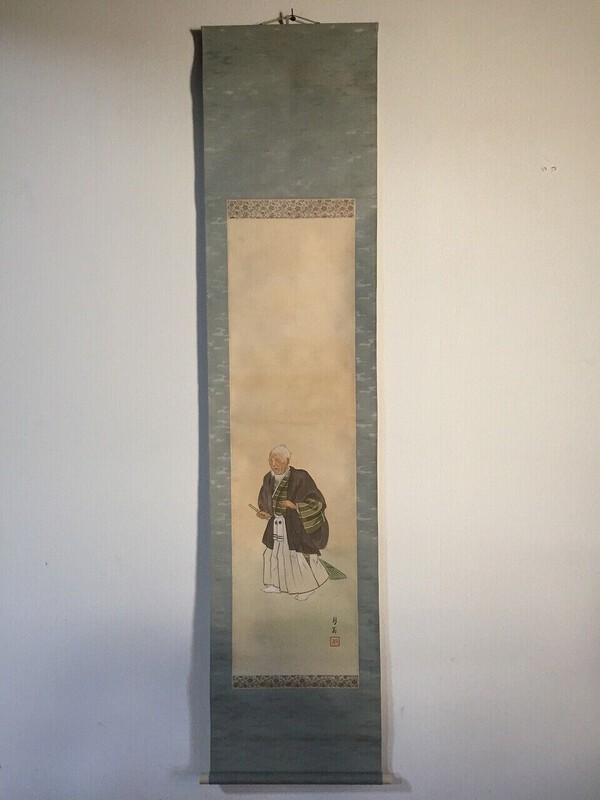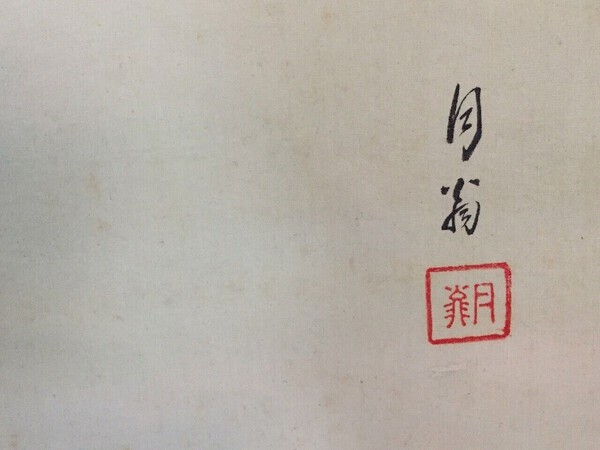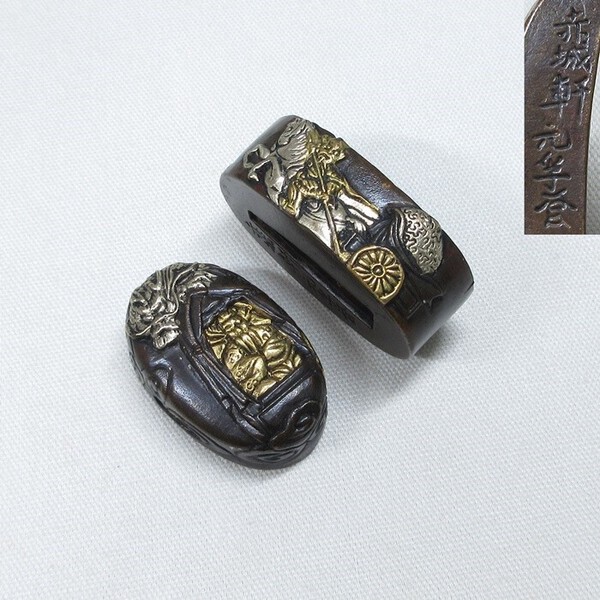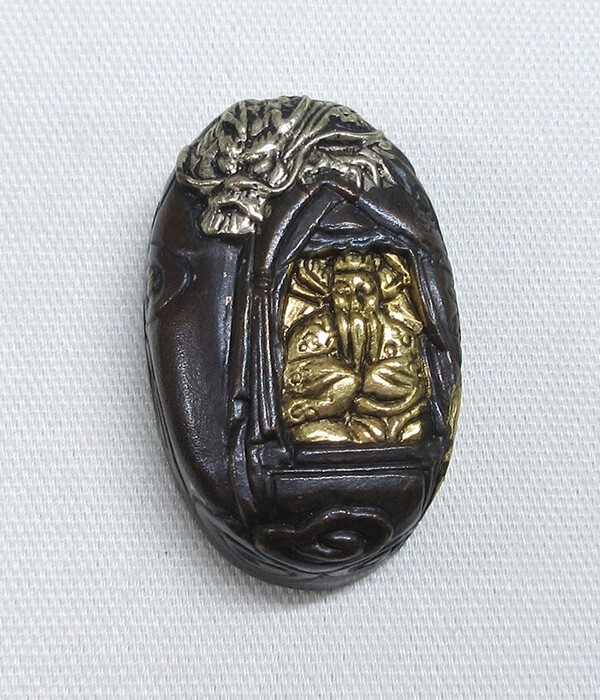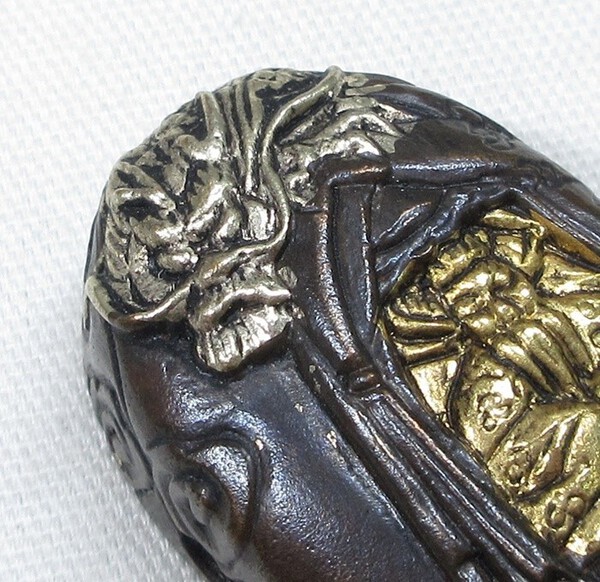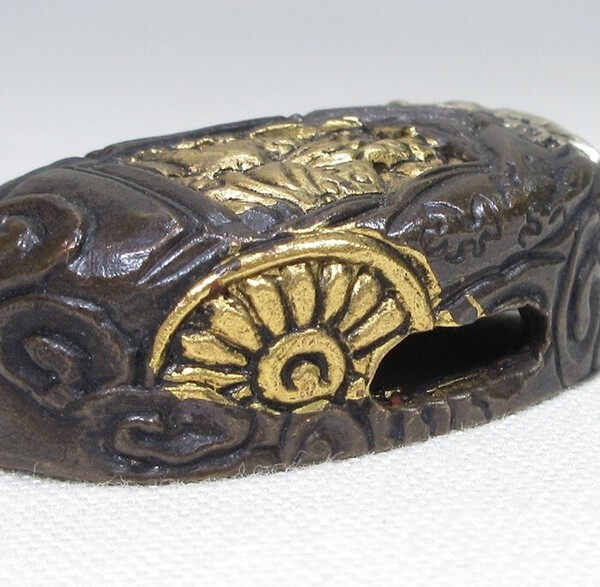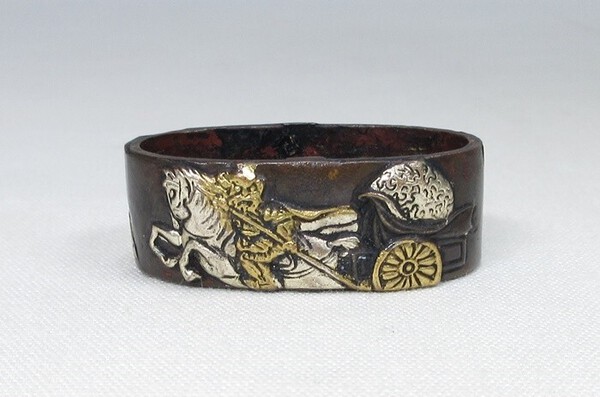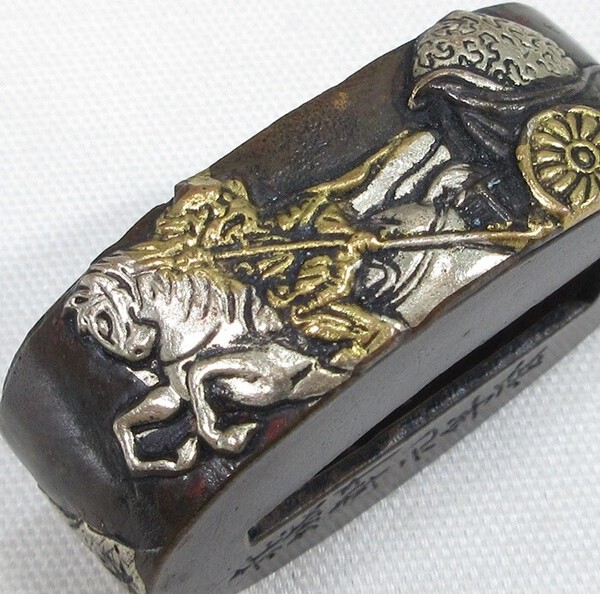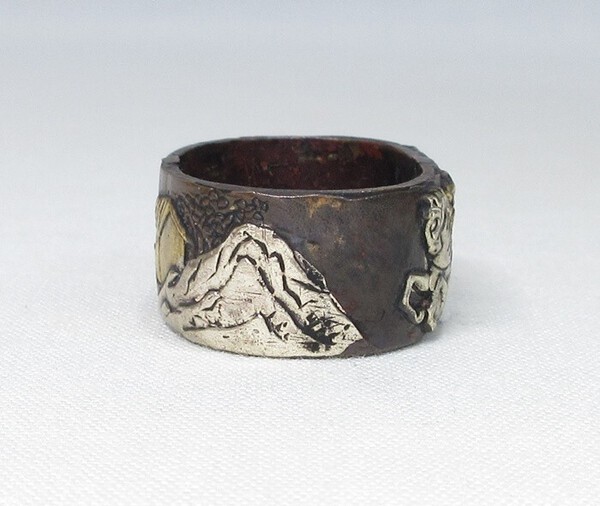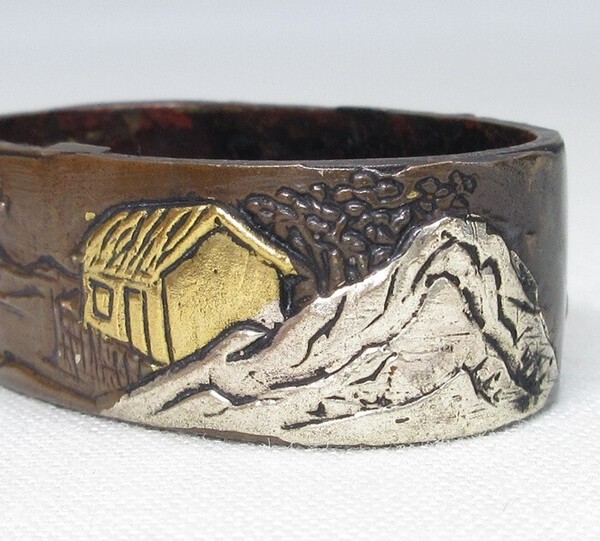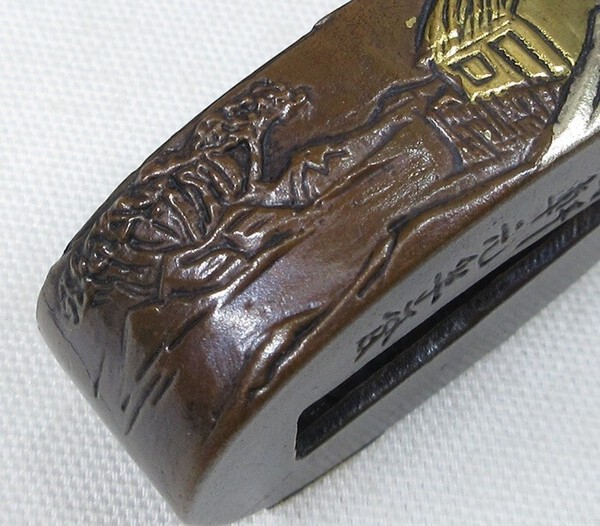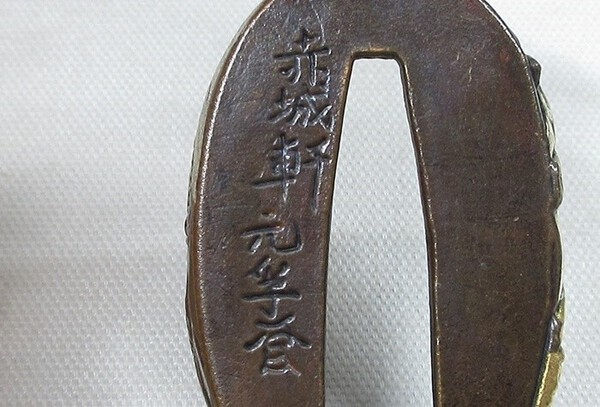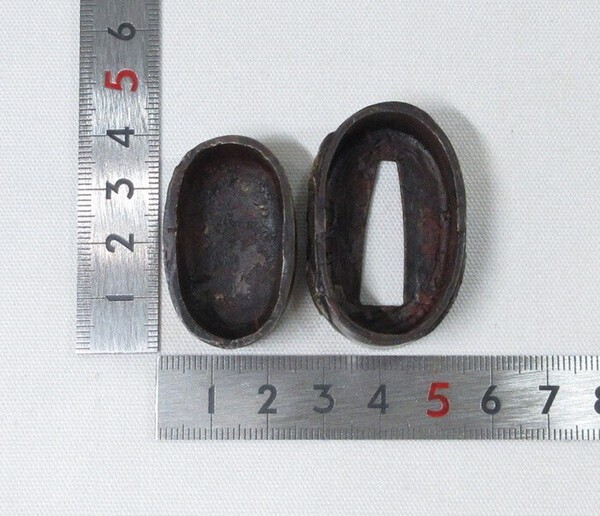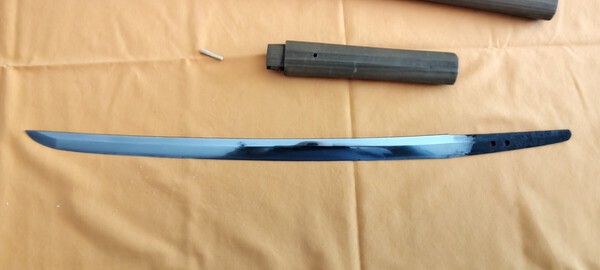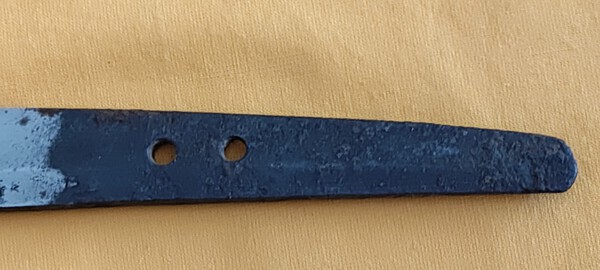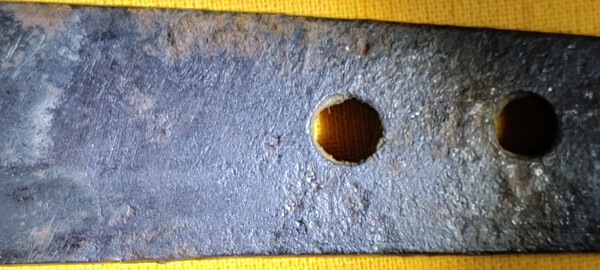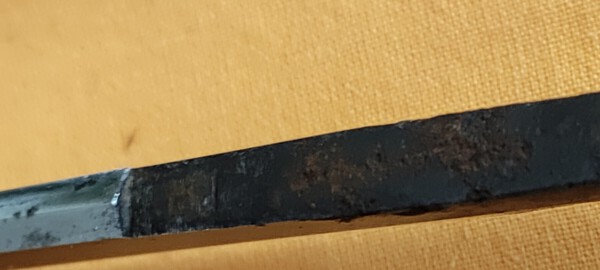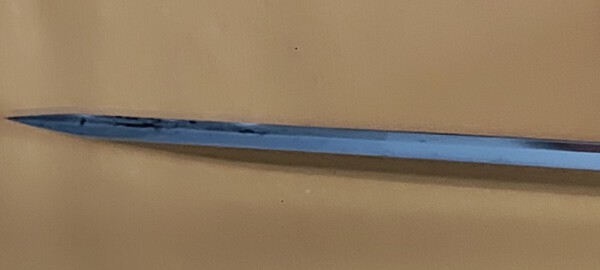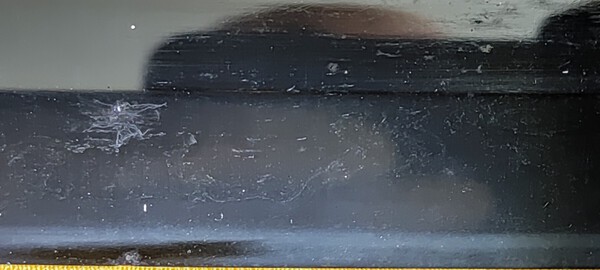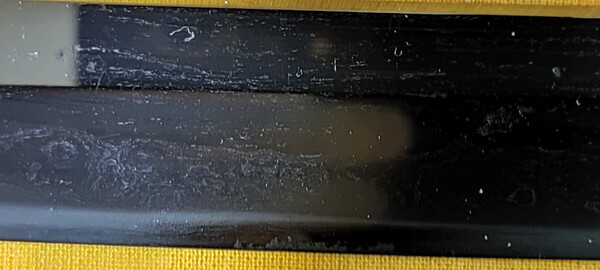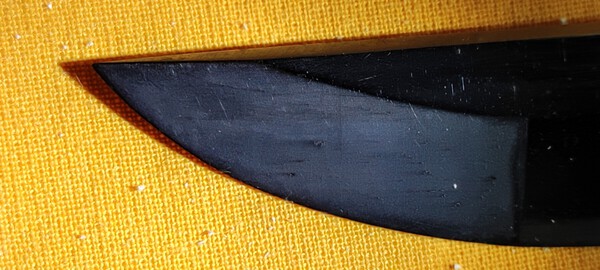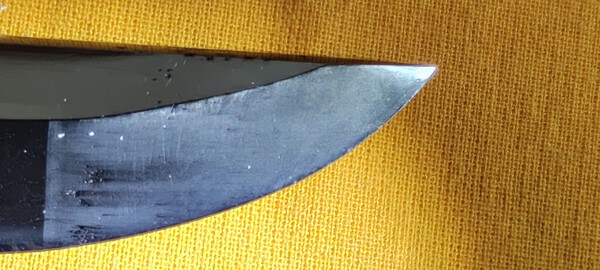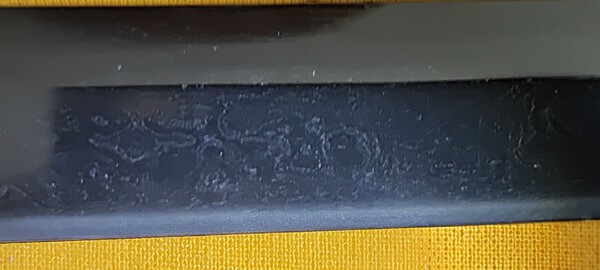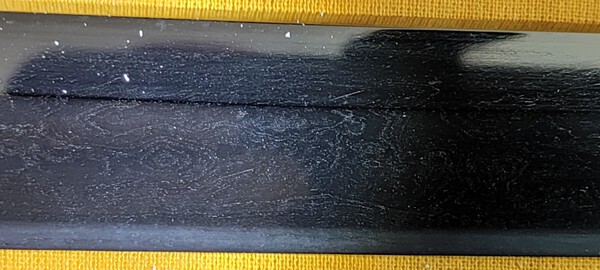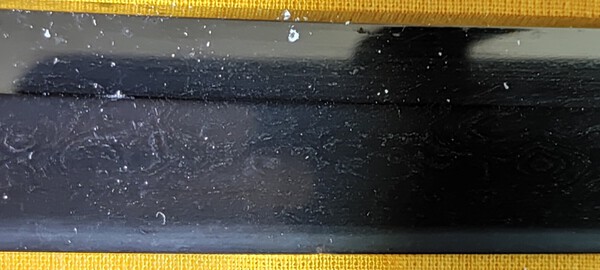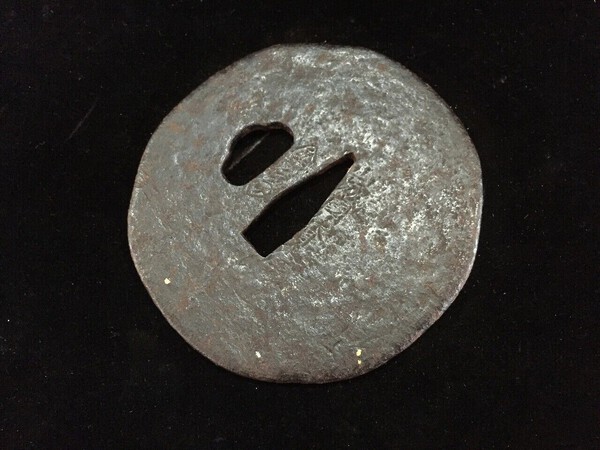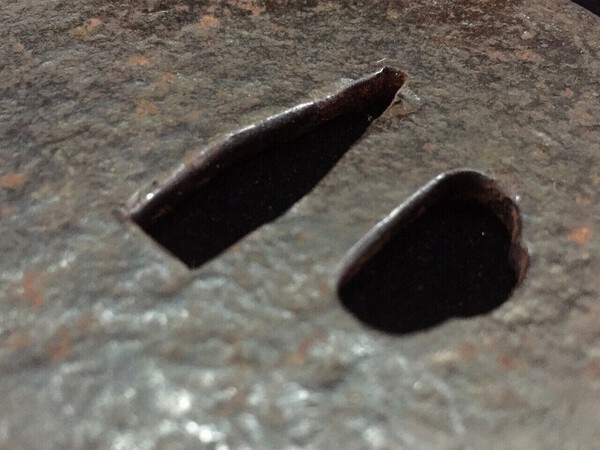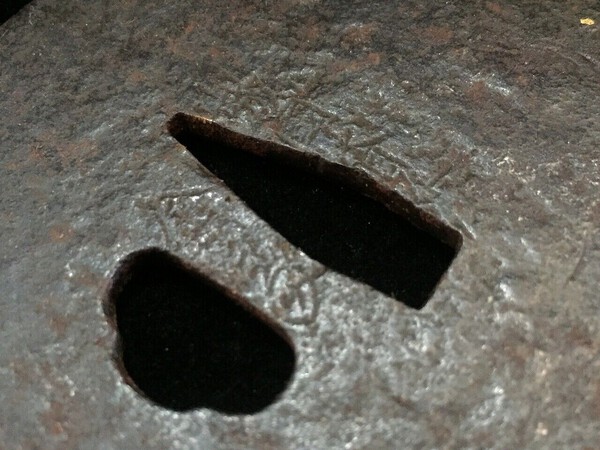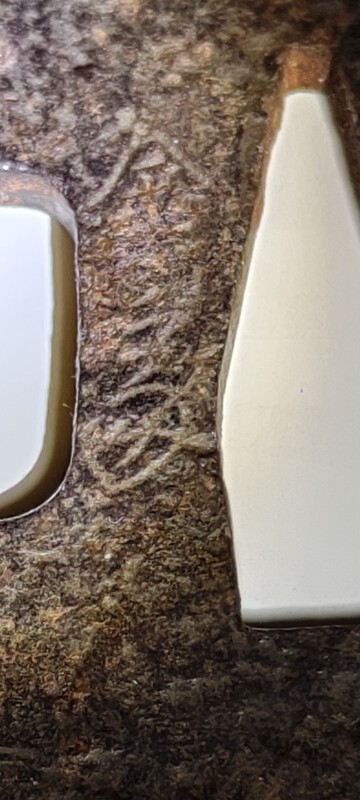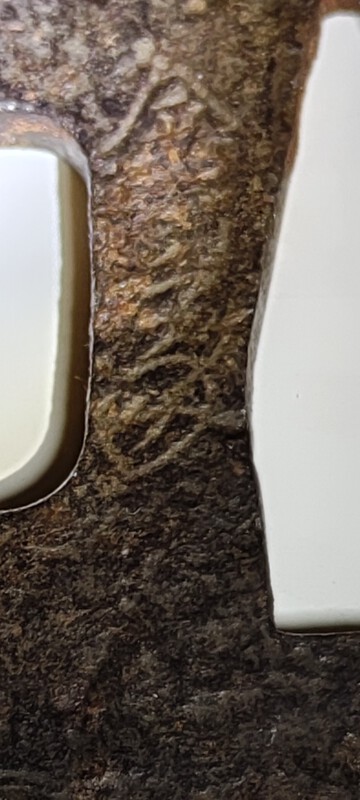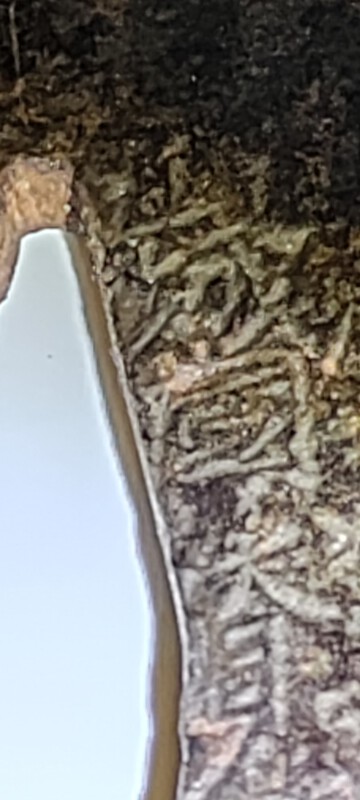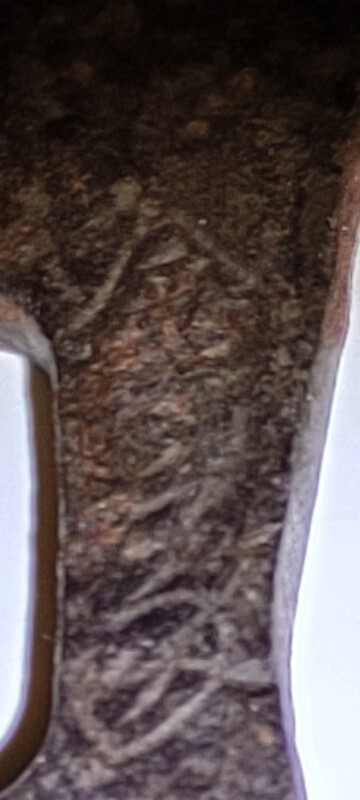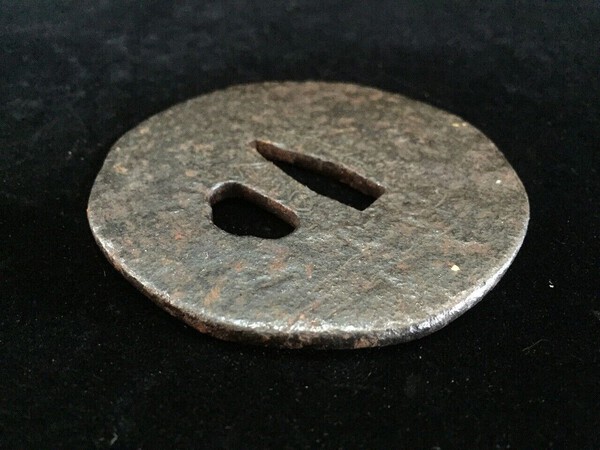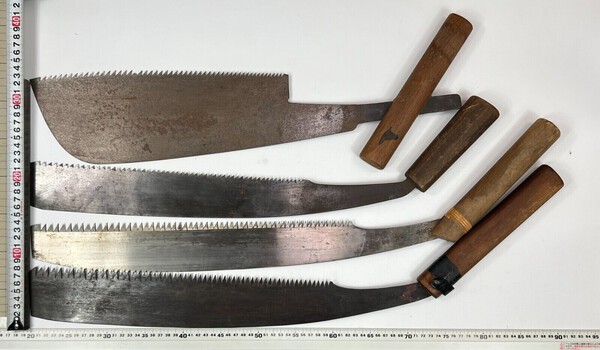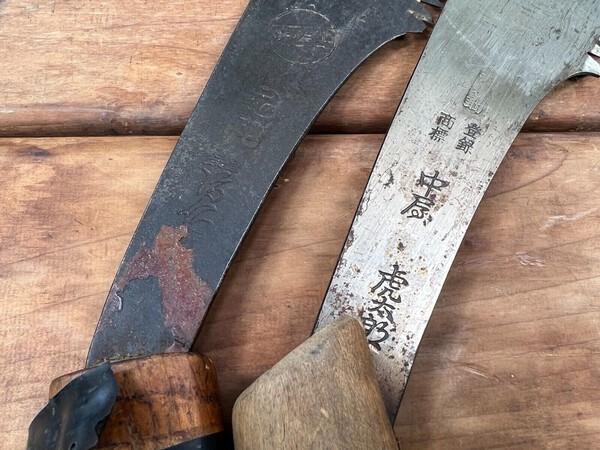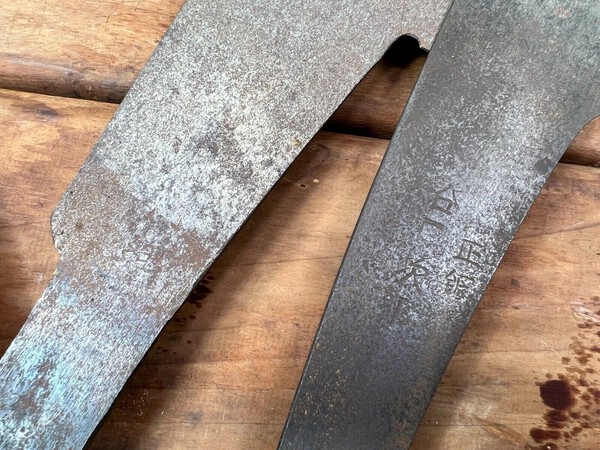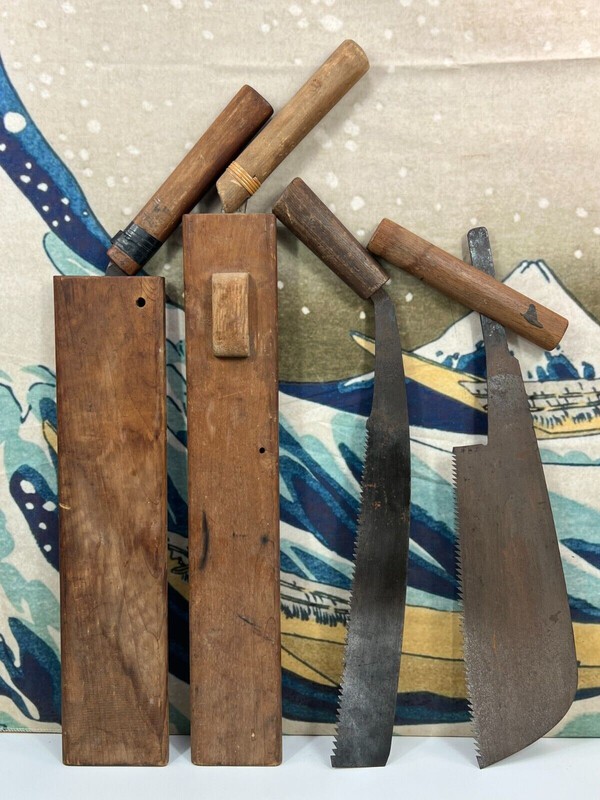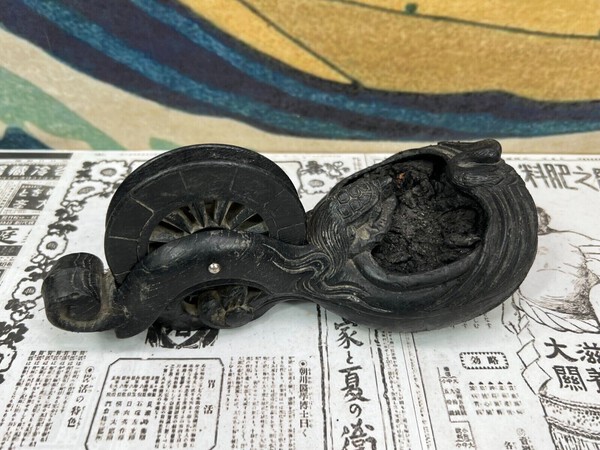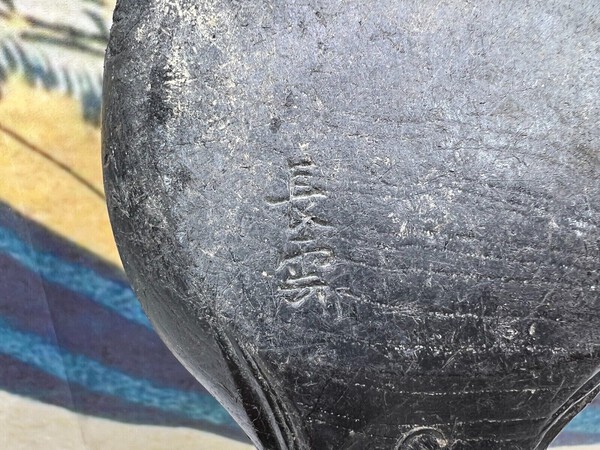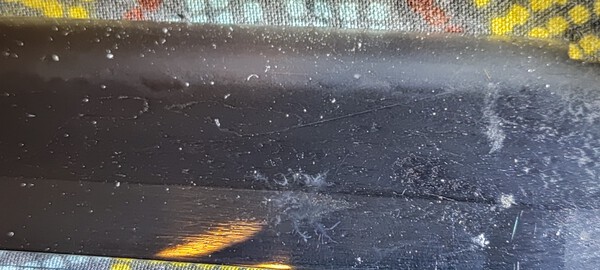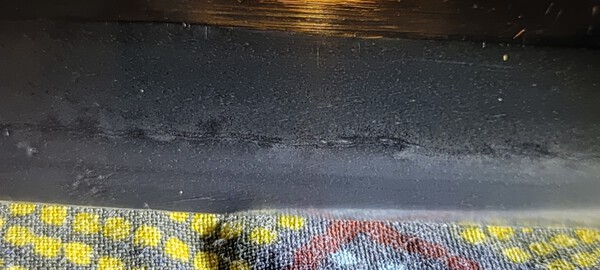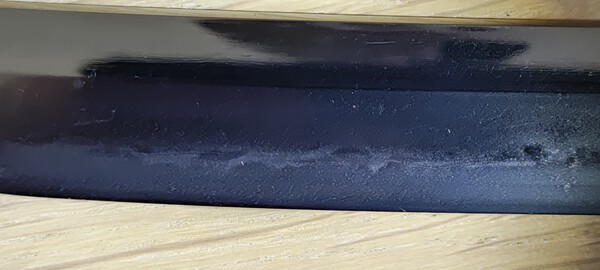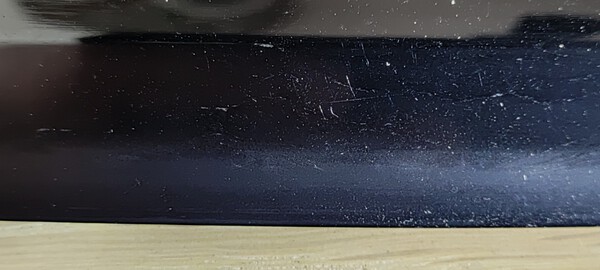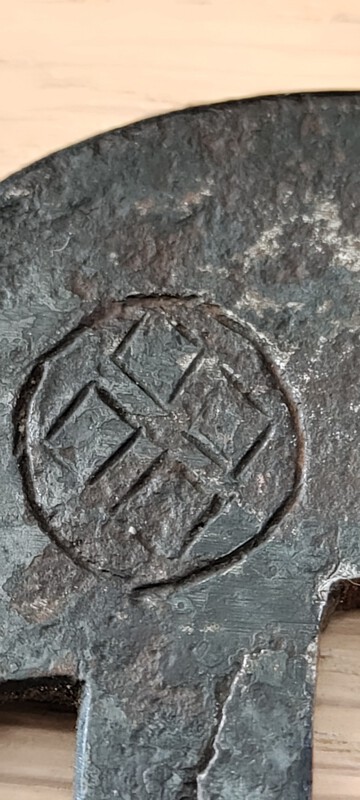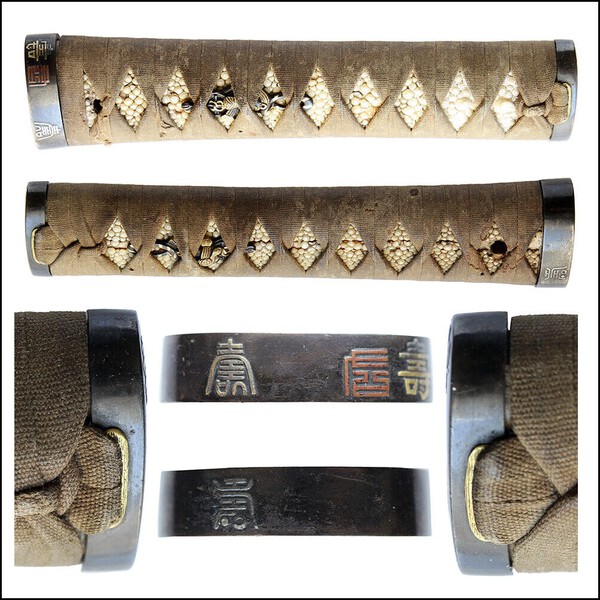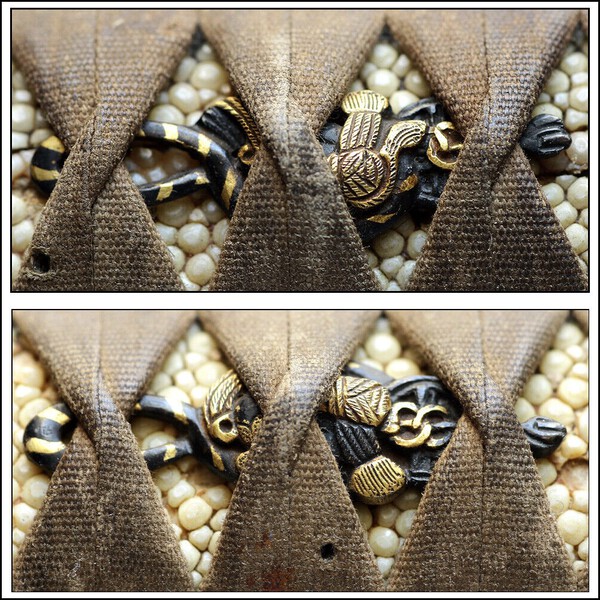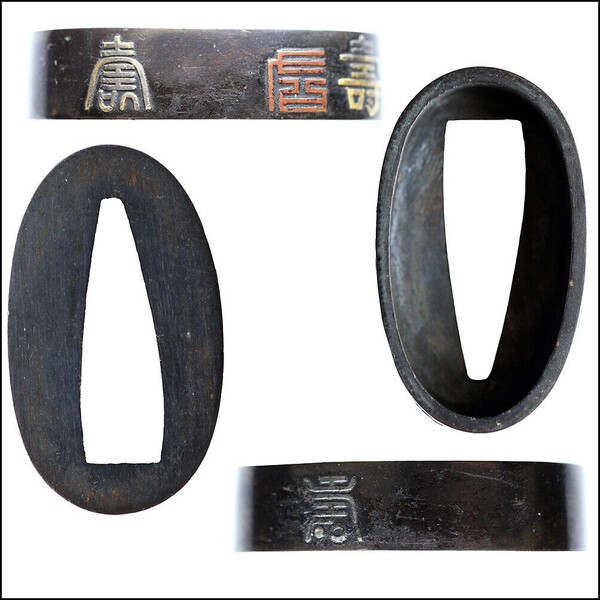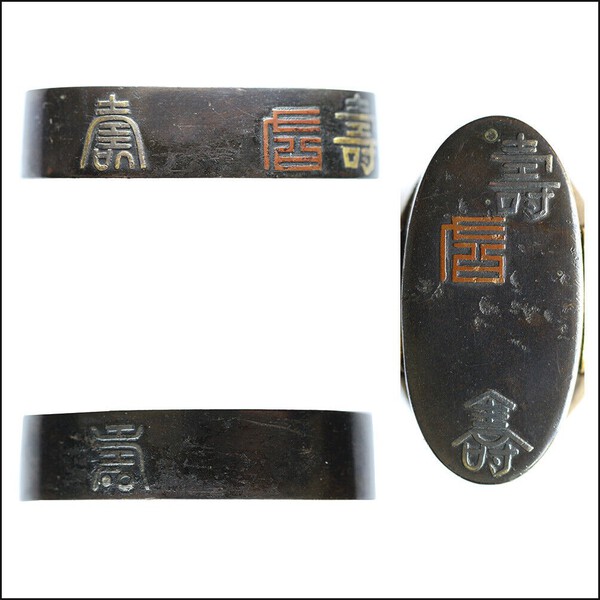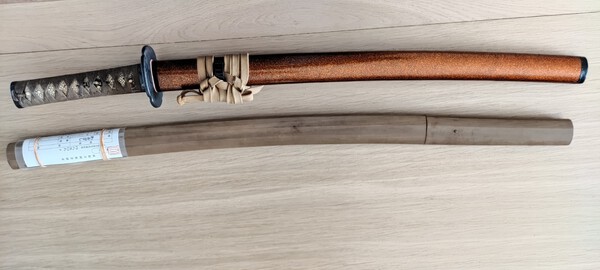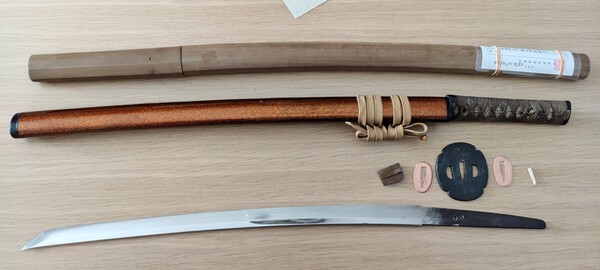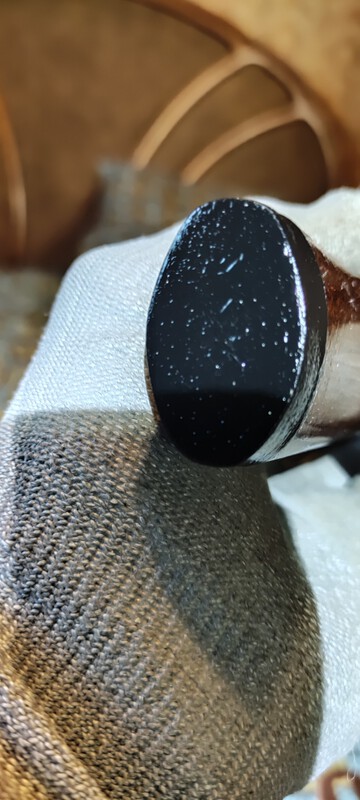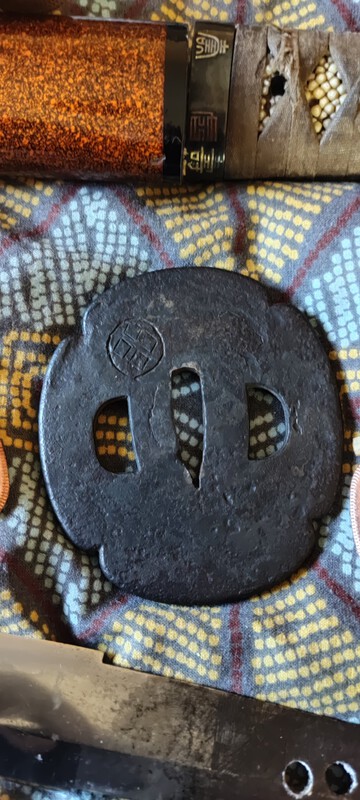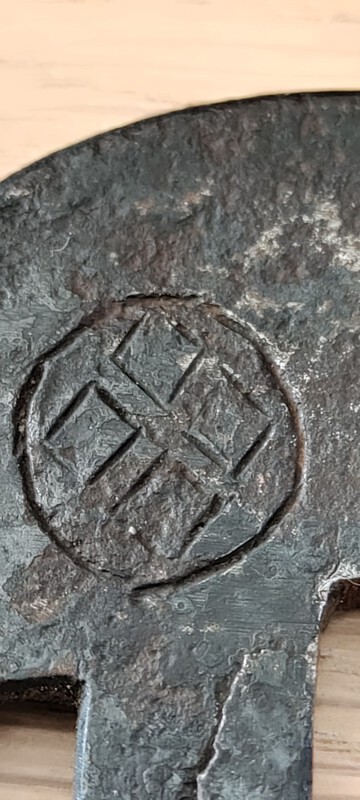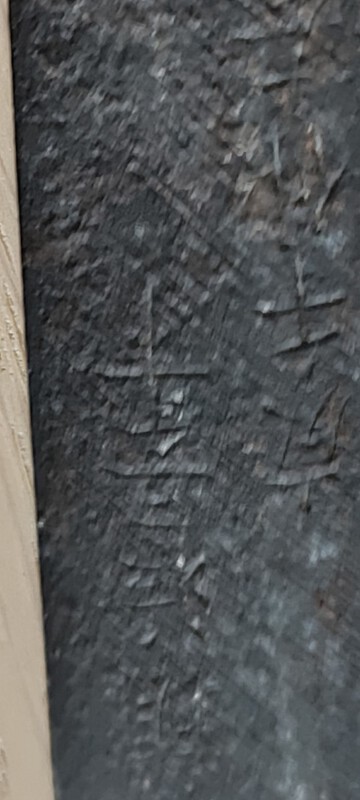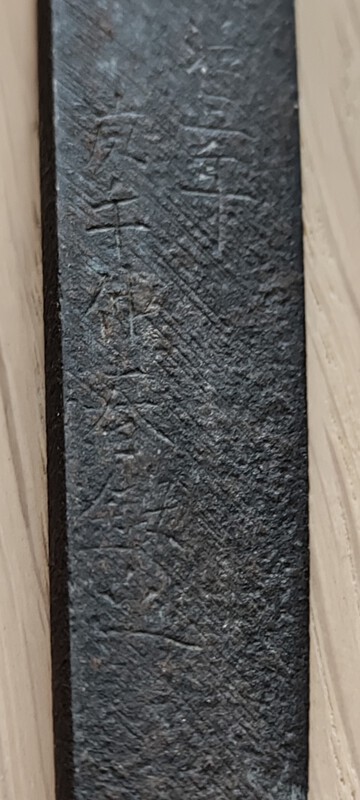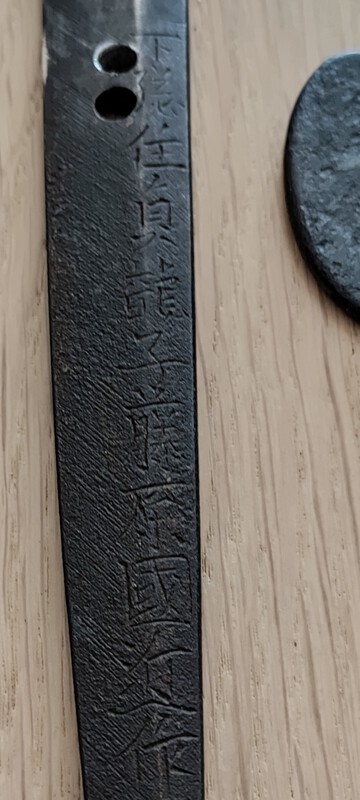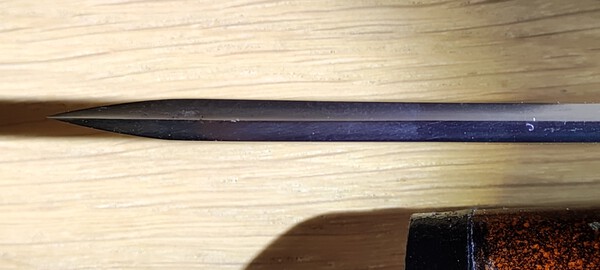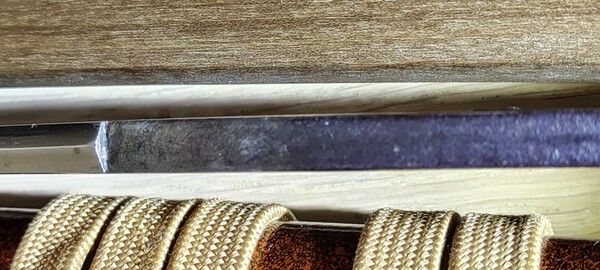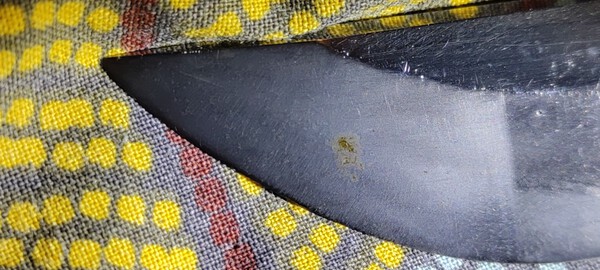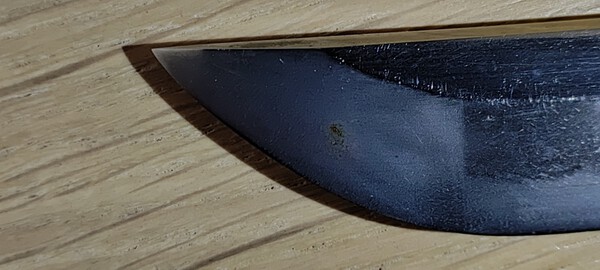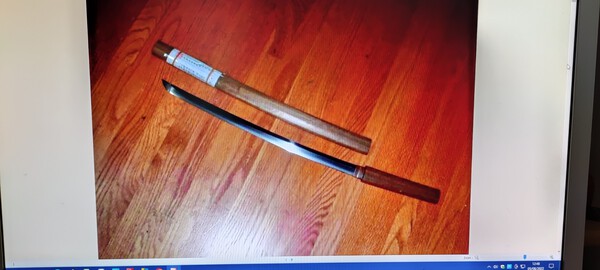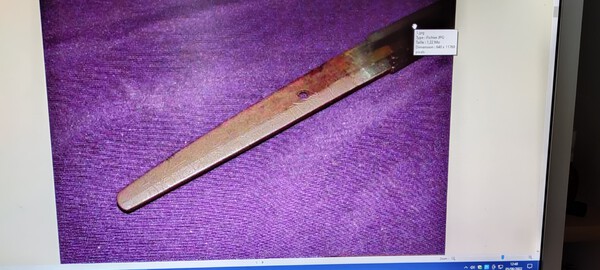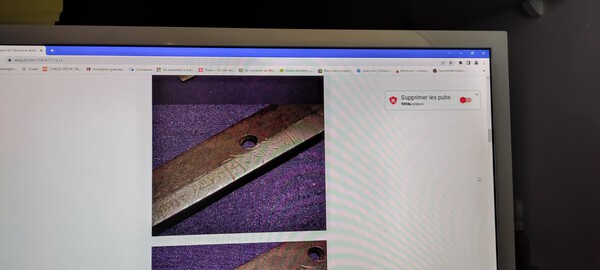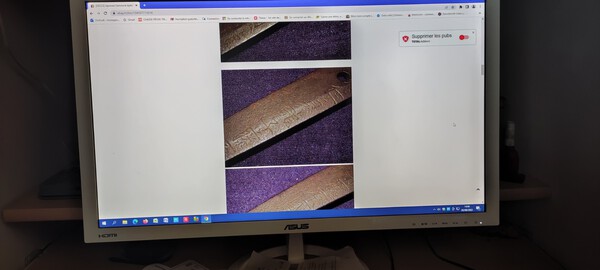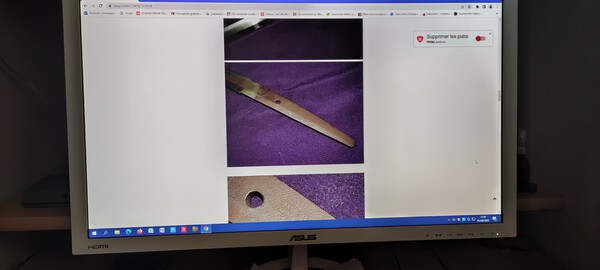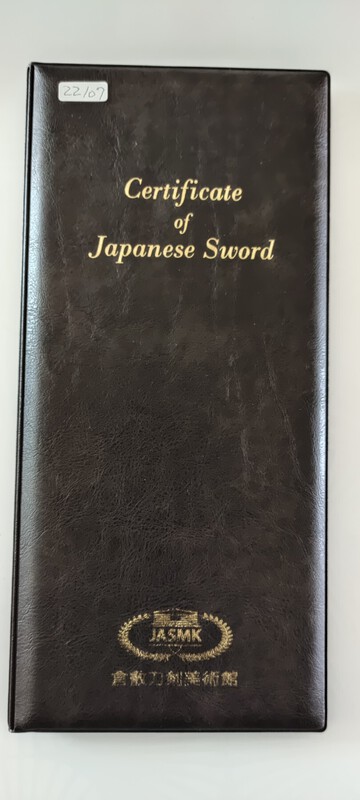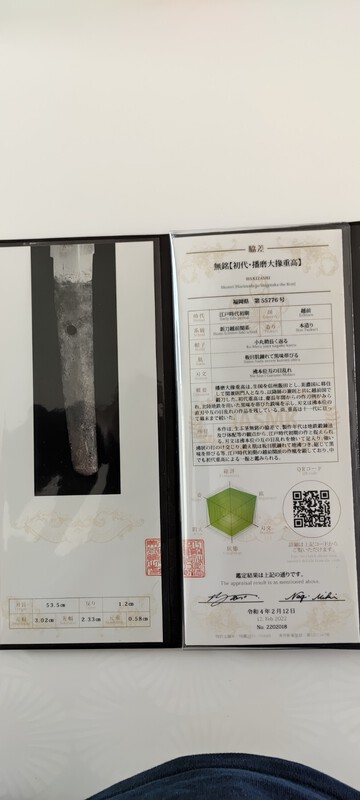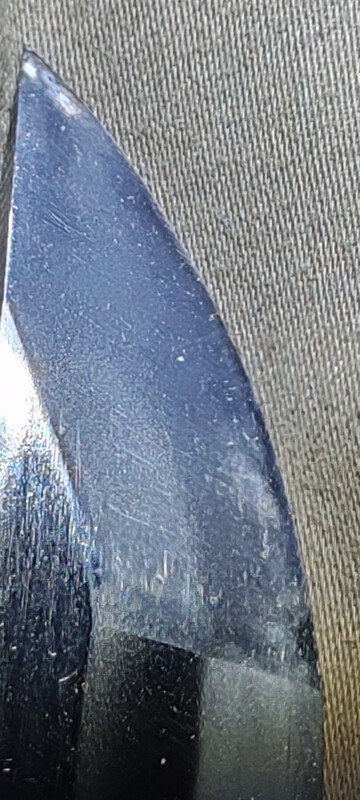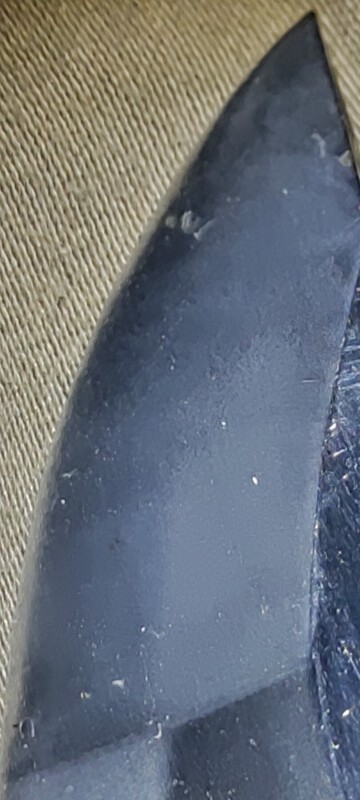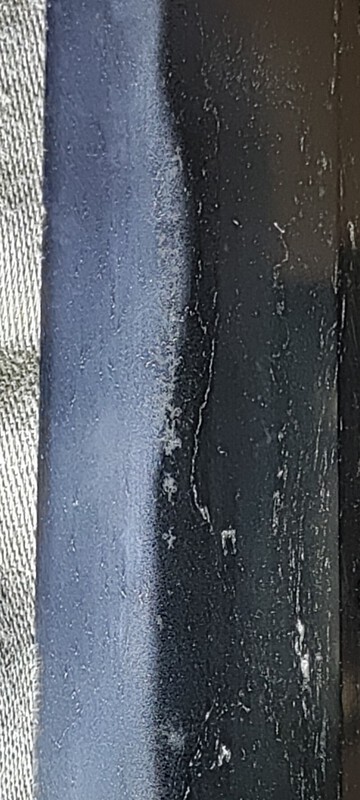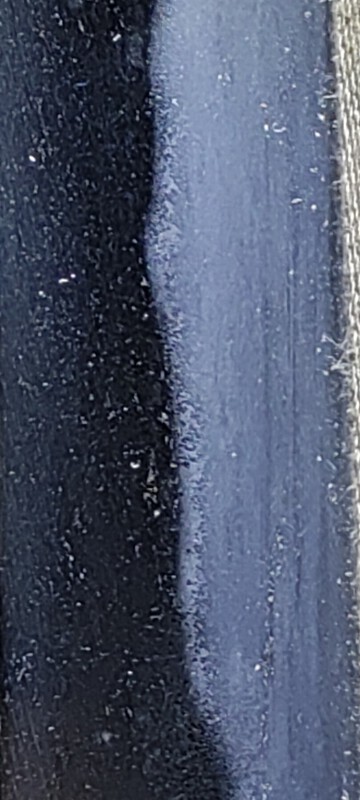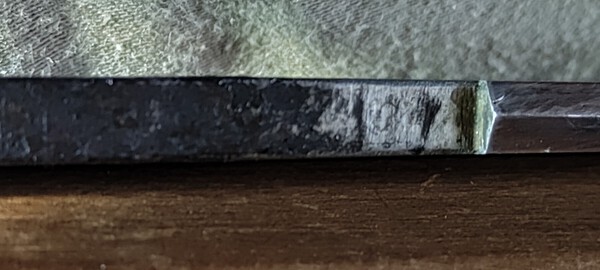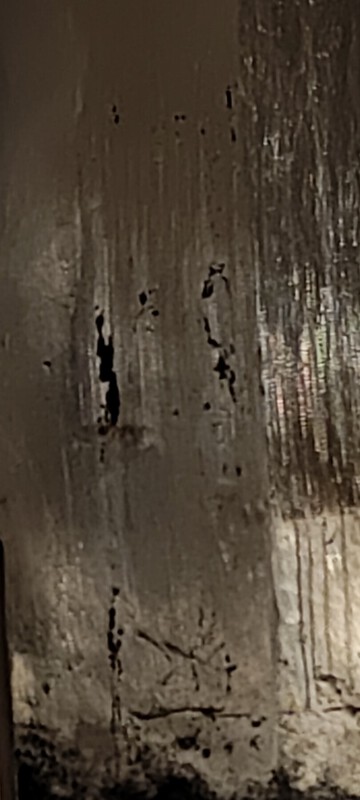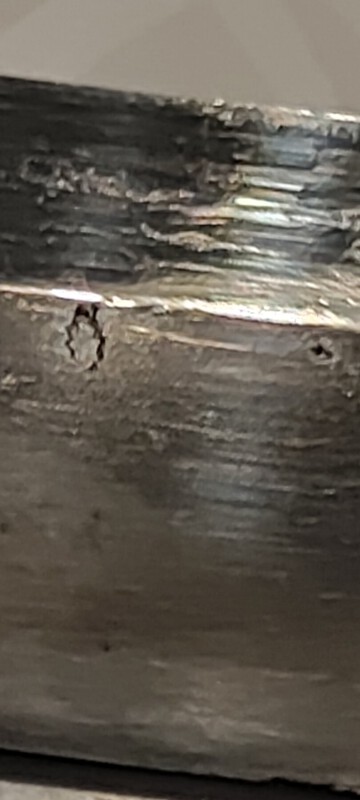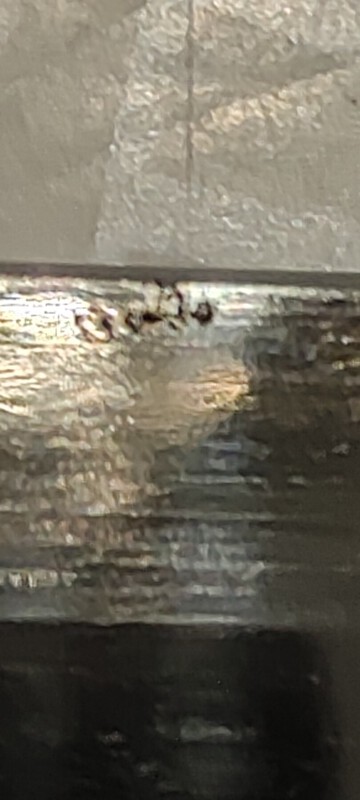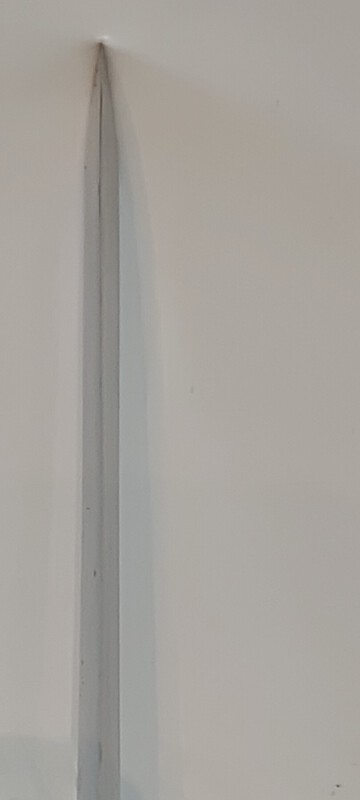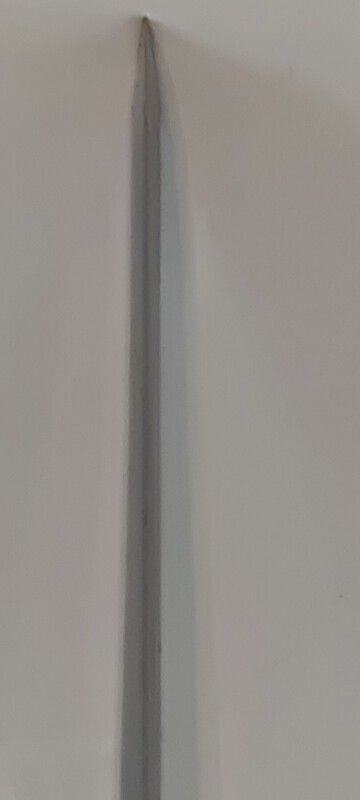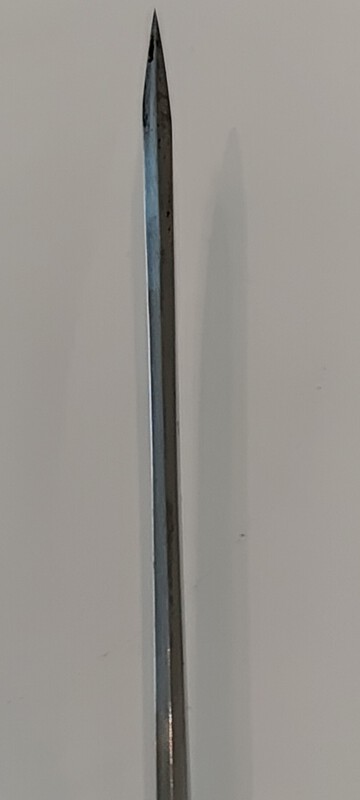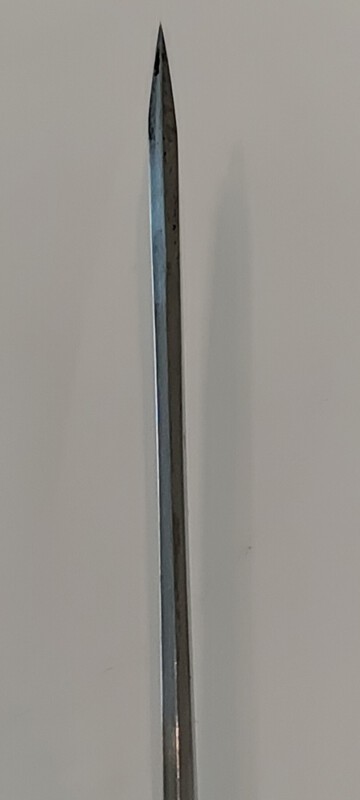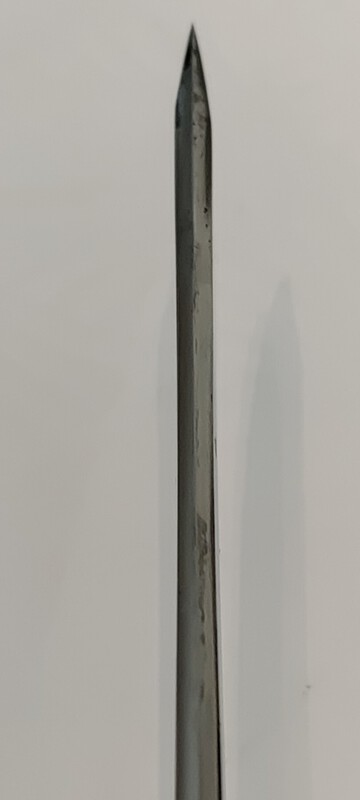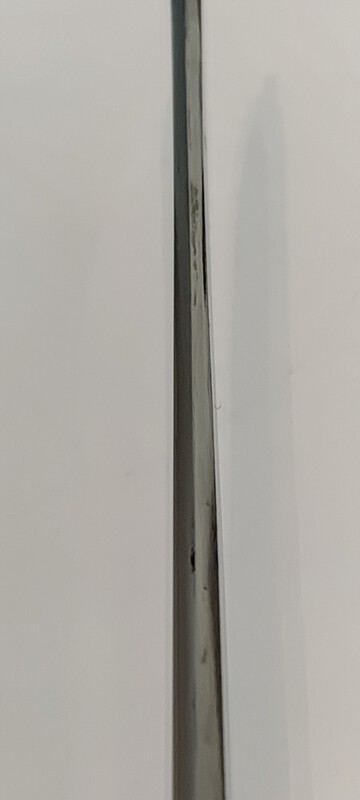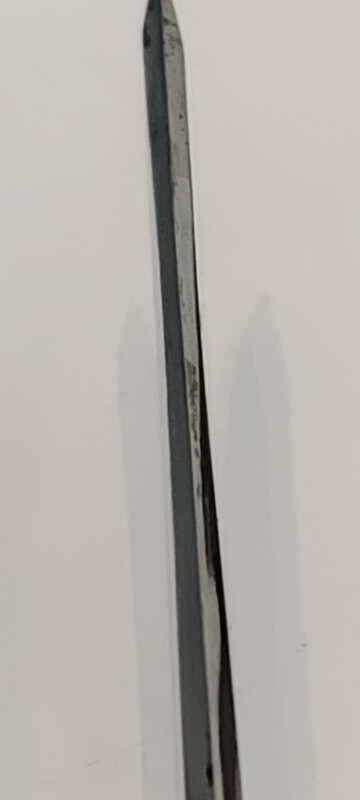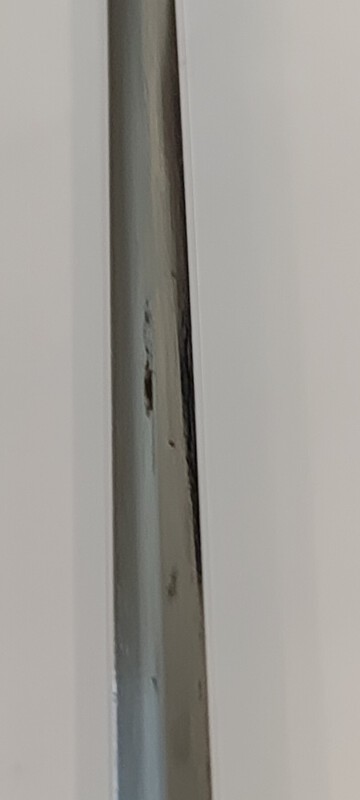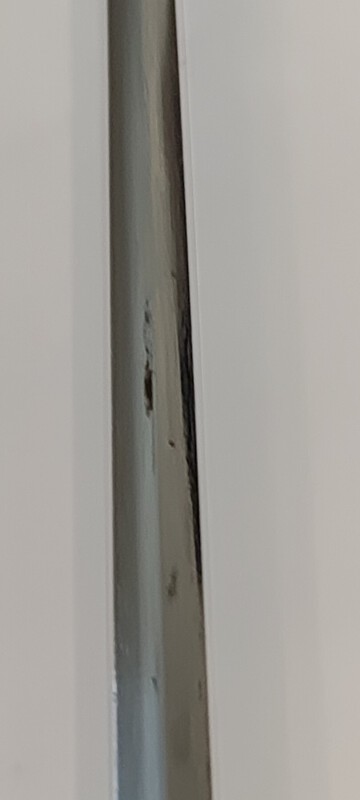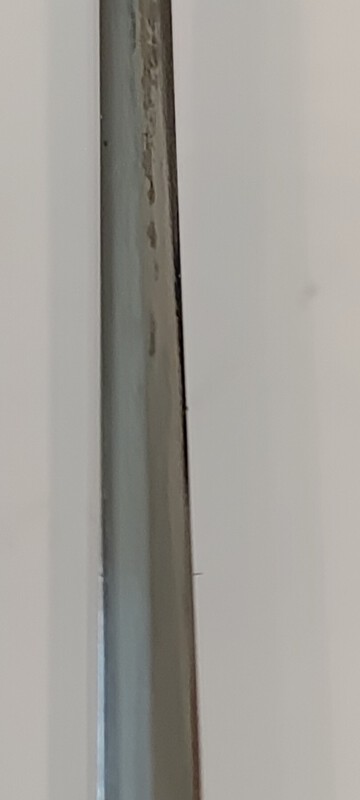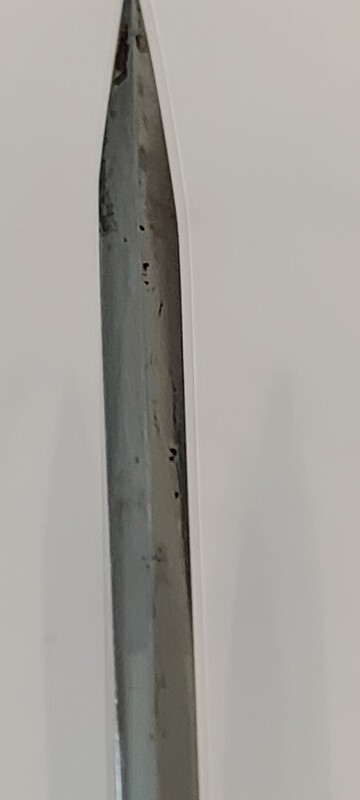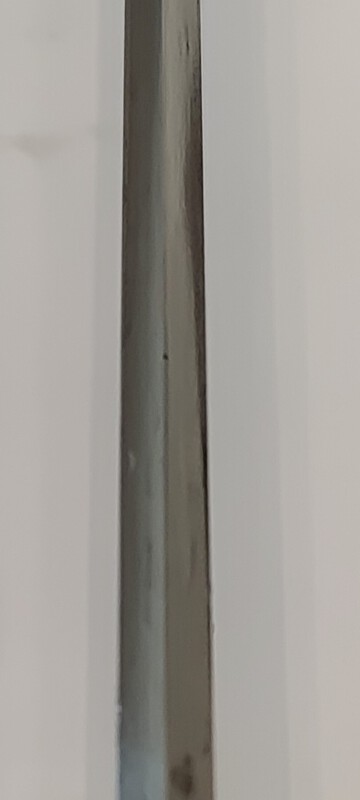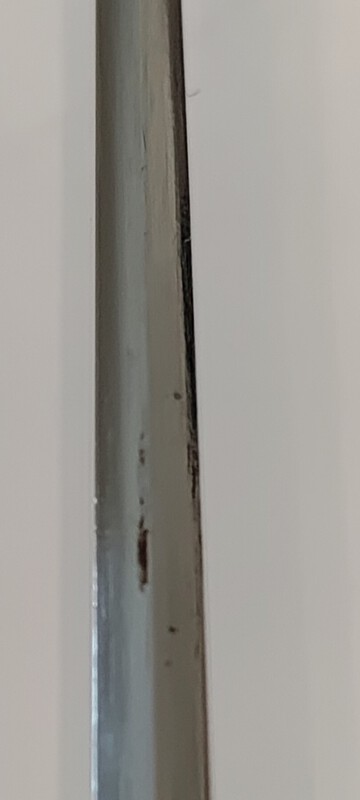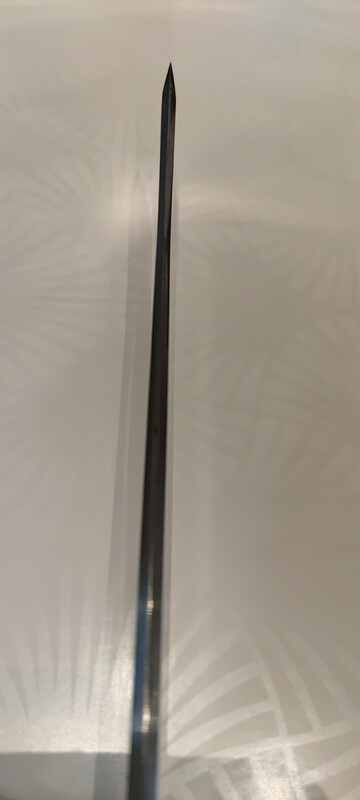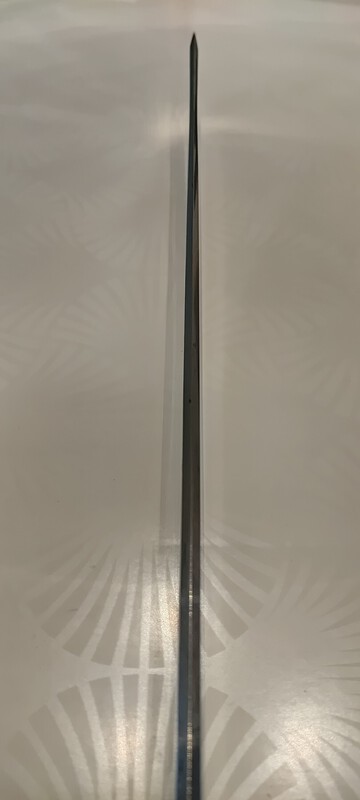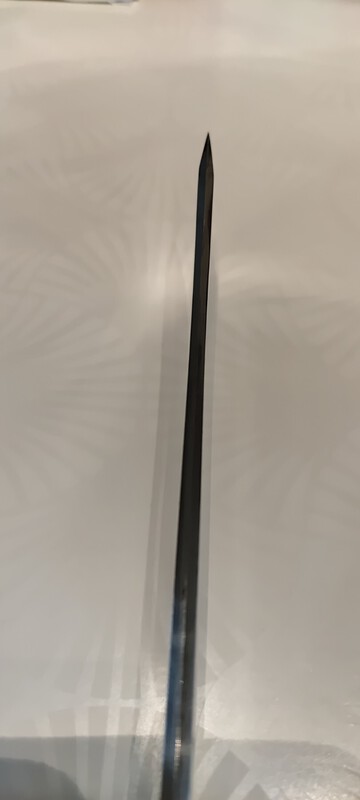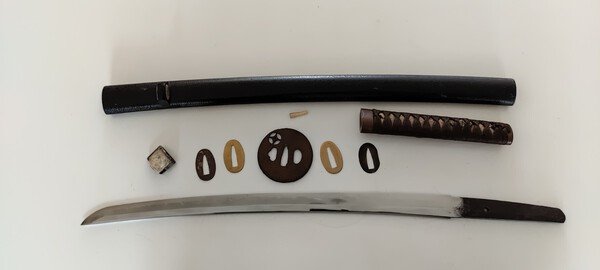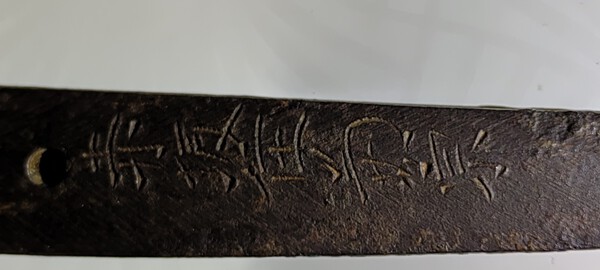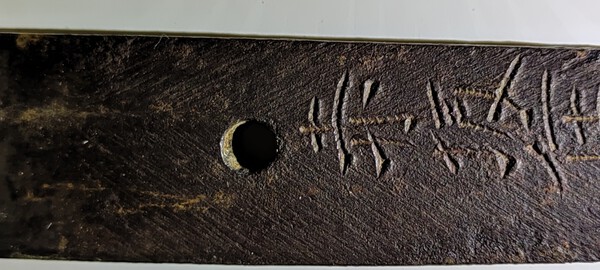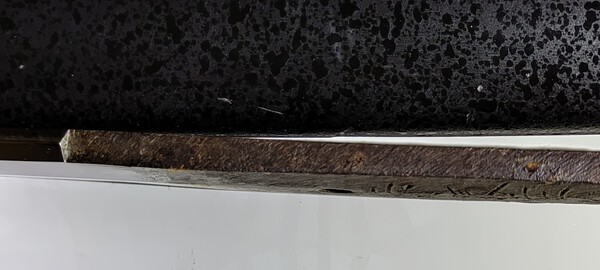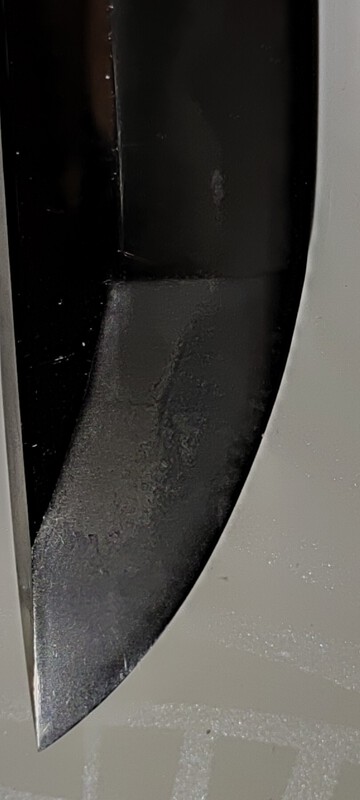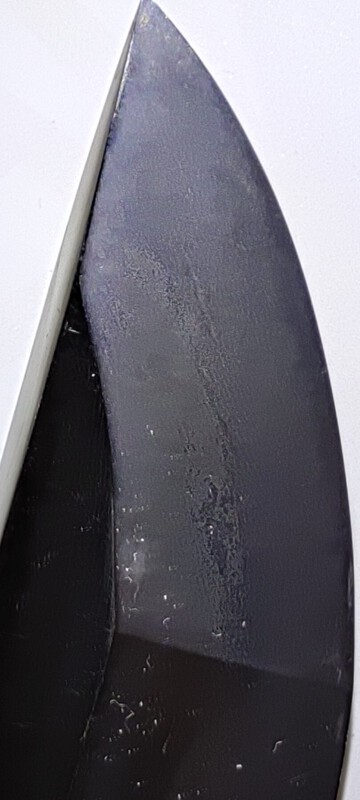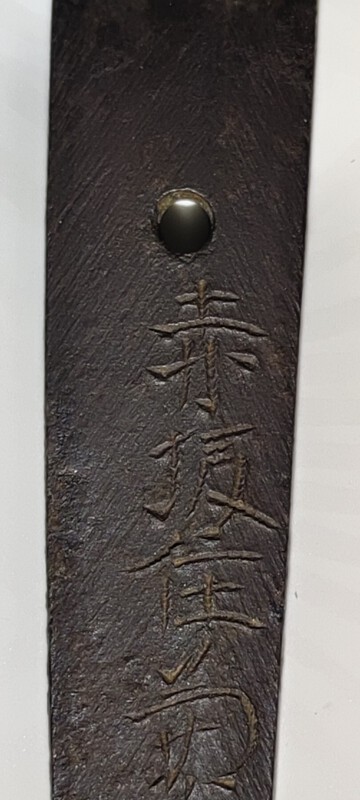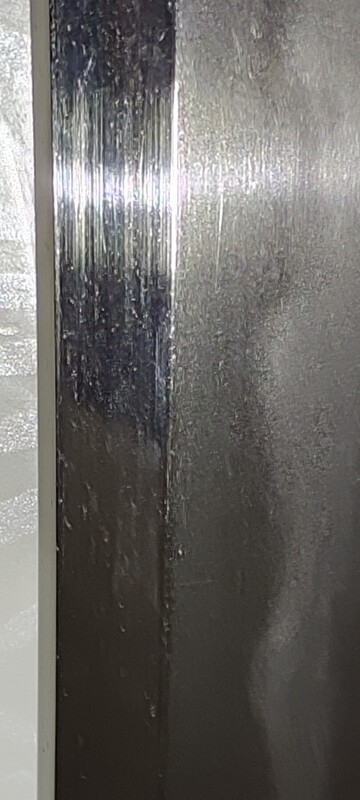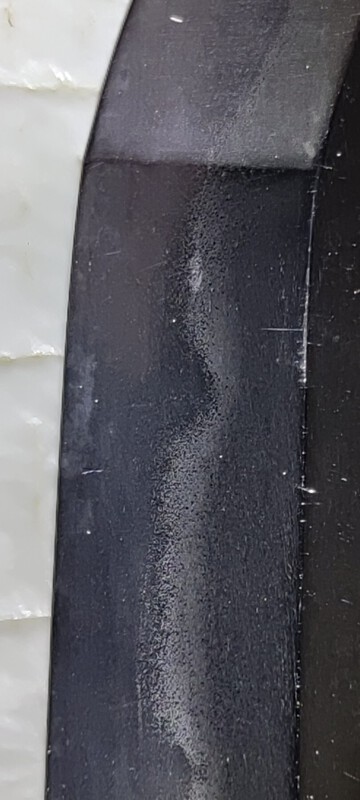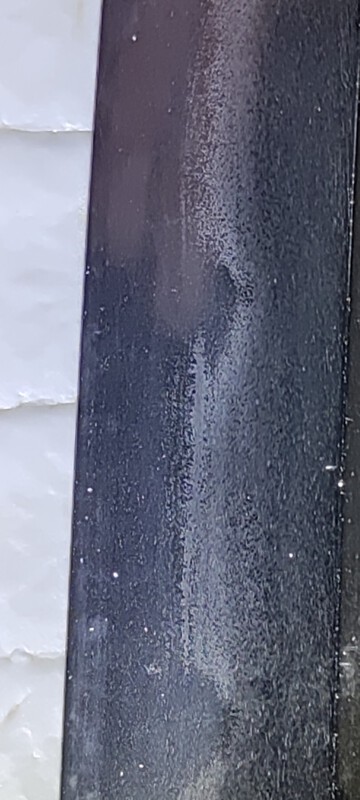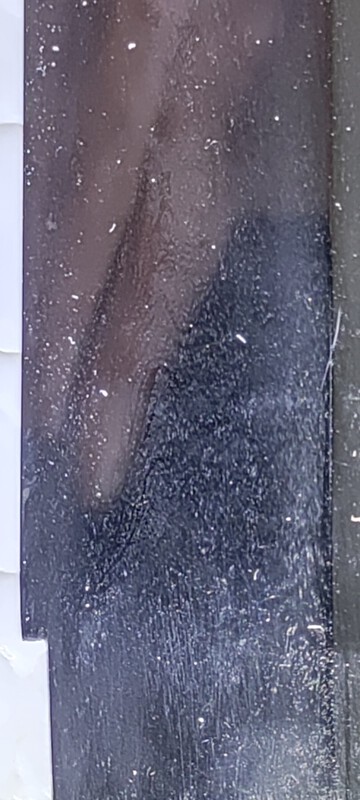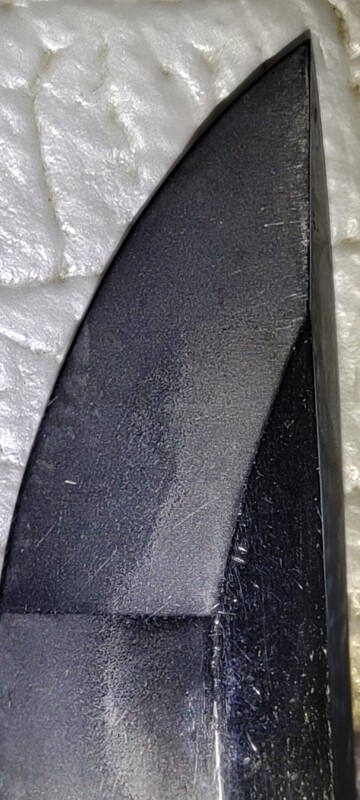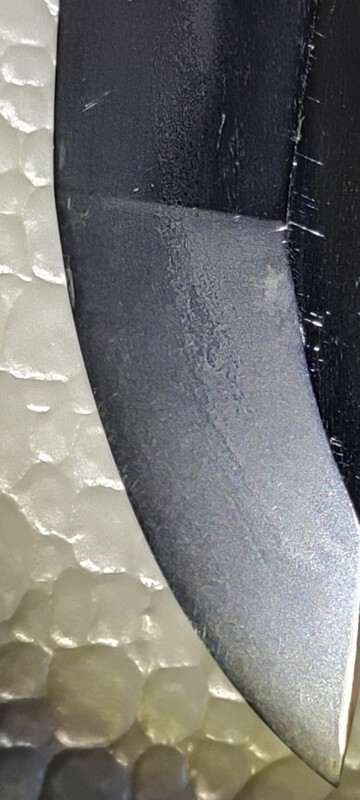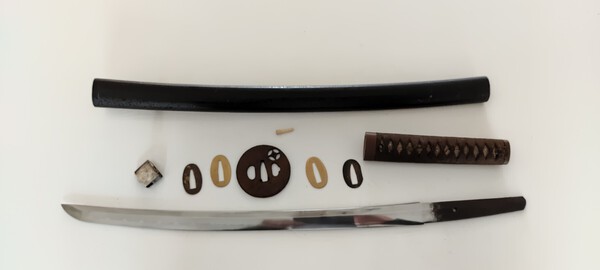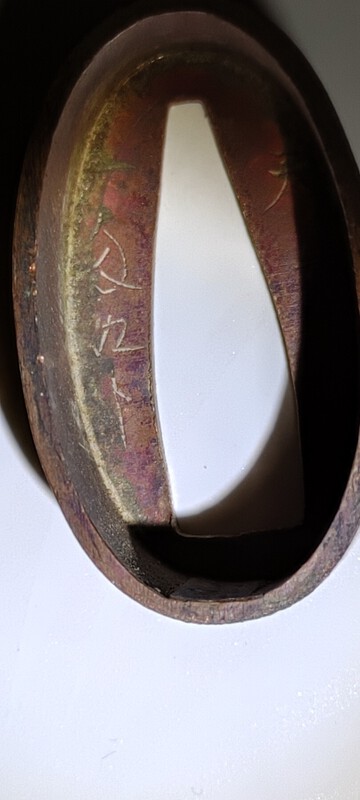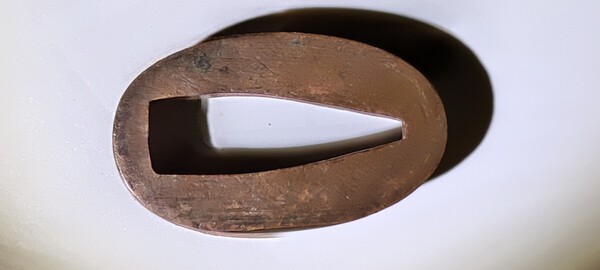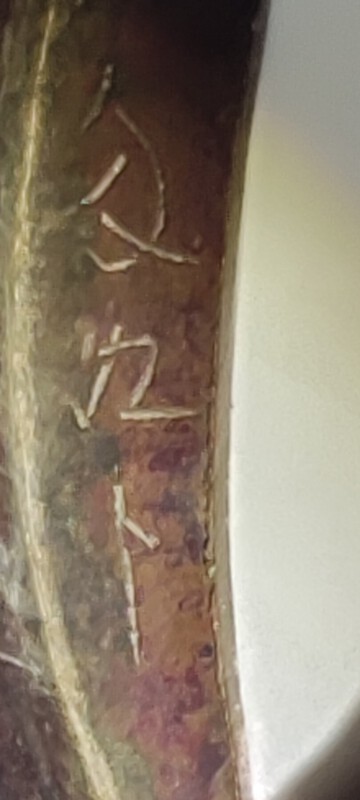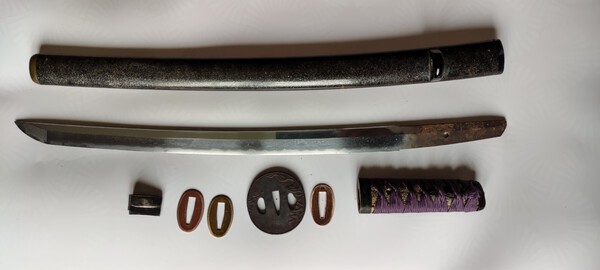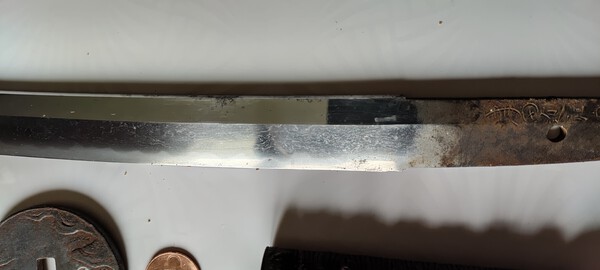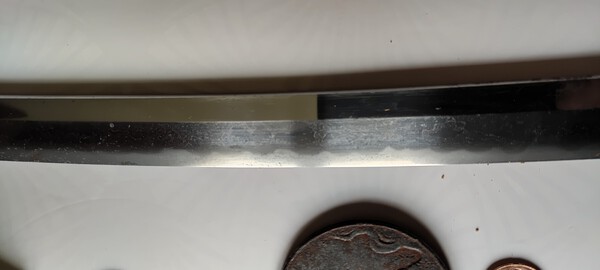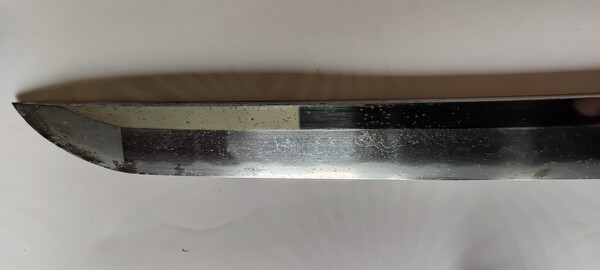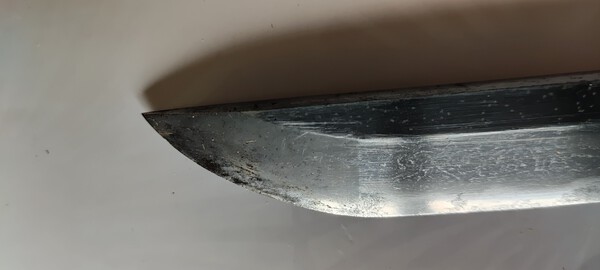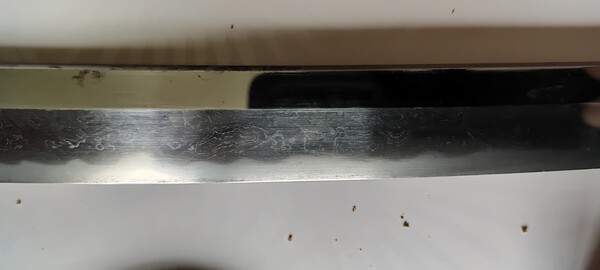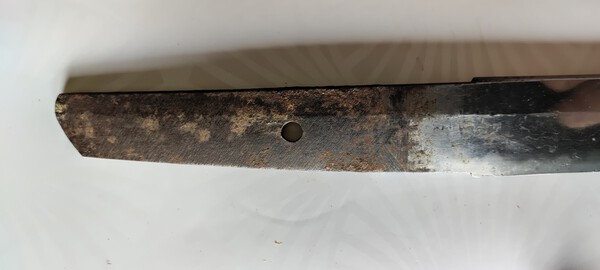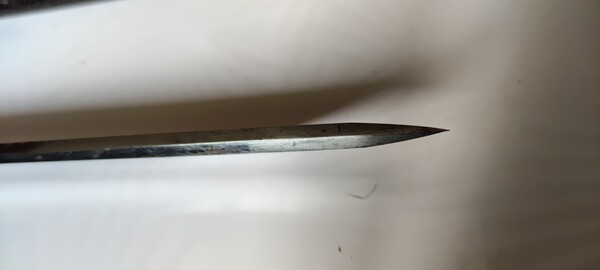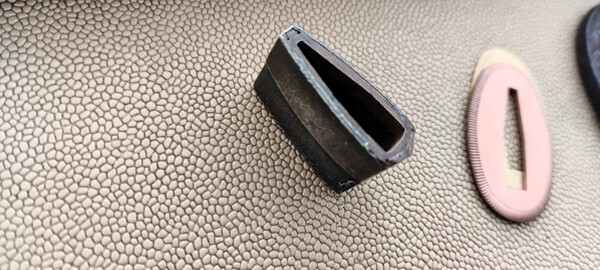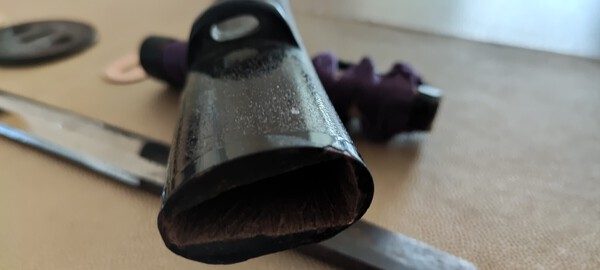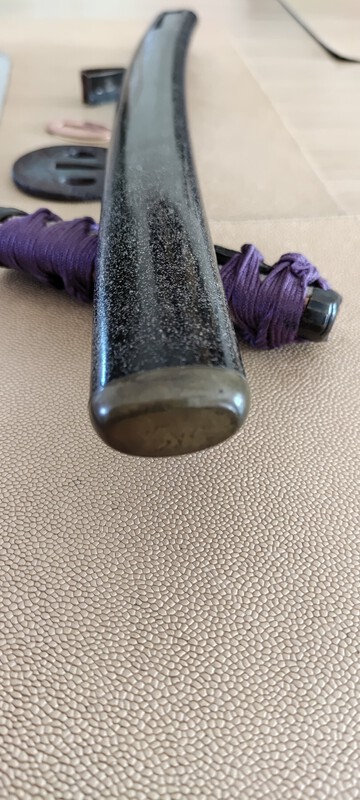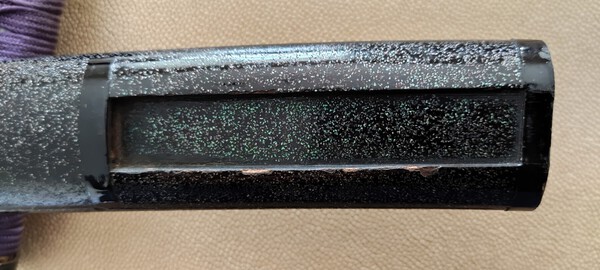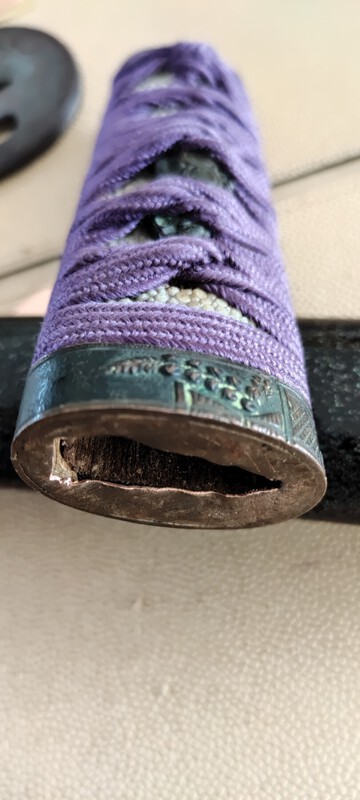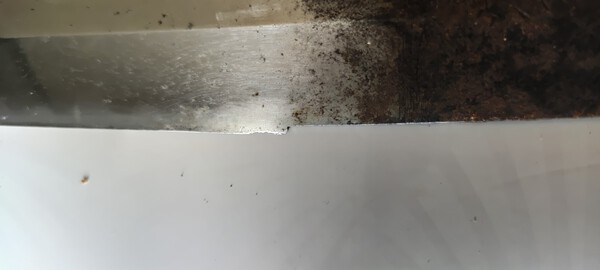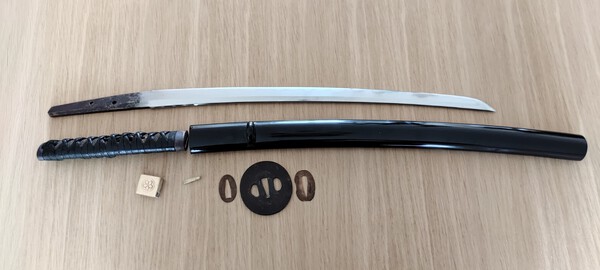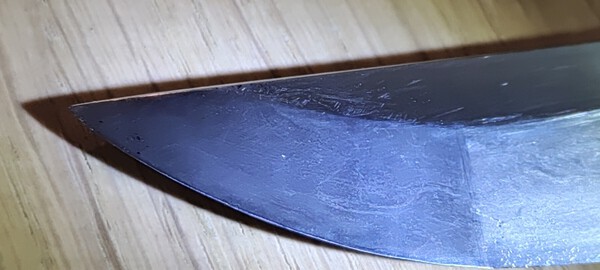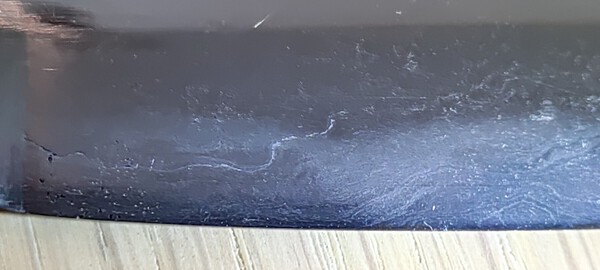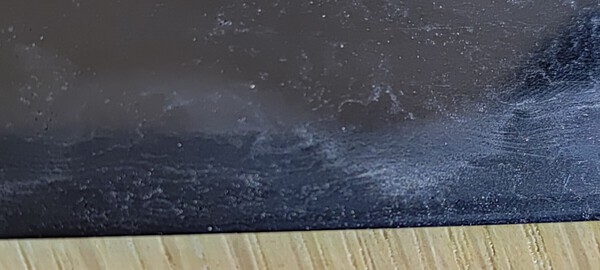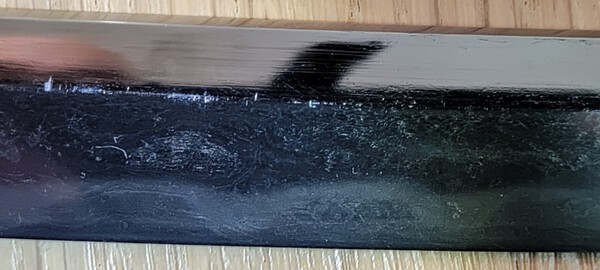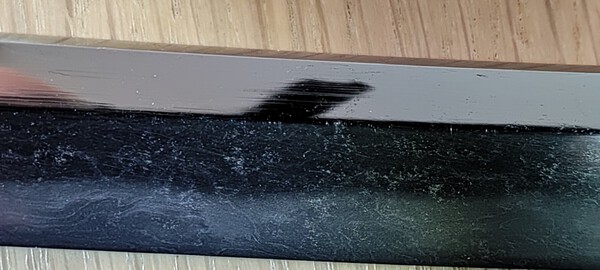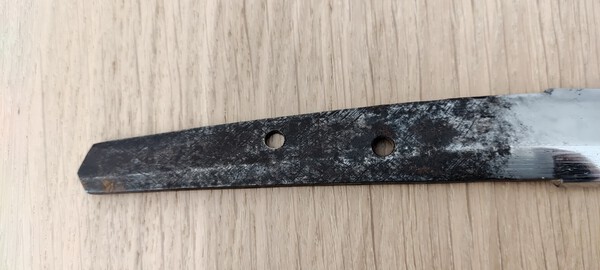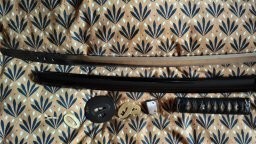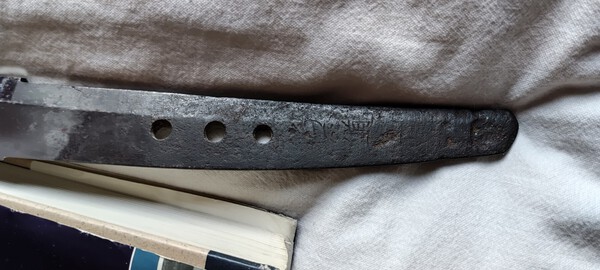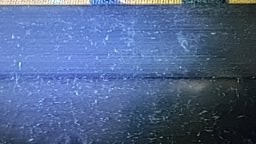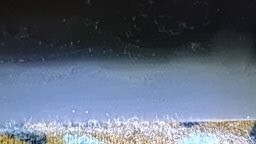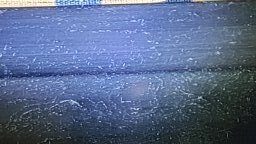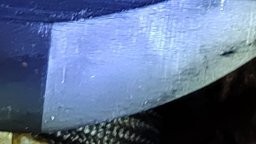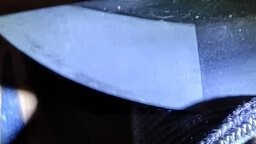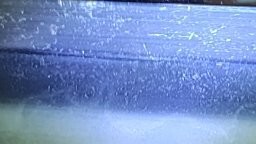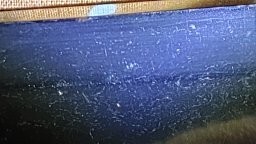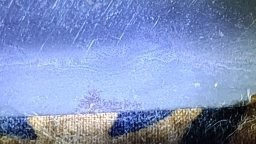
rodrig4
Members-
Posts
111 -
Joined
-
Last visited
Content Type
Profiles
Forums
Events
Store
Downloads
Gallery
Everything posted by rodrig4
-
Good morning. This is a recent acquisition and I would like to understand what these kanji mean and this stamp that I present in these photos as well as this label. Main material: silk. Original/Reproduction: Vintage original Hand painting: printing. Region of origin: Japan Age: 1900-1940 Manufacturer: Japan Thanks in advance. R.G.
-
Good morning. This is a recent acquisition and I would like to understand what these kanji and this stamp that I present in this photo mean. Primary Material:Silk Original/Reproduction:Vintage Original Hand Paint:Print Region of Origin:Japan Age:1900-1940 Maker:Japan thanks in advance. RG.
-
Good morning. here is this fushi and kashira set that I recently acquired. It is dated according to the seller from the MEIJI period. I decoded among the kanji of the signature a kane and a mitsu without being able to translate entirely. I thank you in advance if you can fix it. RG.
-
_Good morning. I am perplexed by these clear or dark, it all depends on the lighting,spots on the hamon. this wakisashi was sold to me as uda kunimune from uda school with certificate from NBTHK. the hamon seems to be suguha and the ji mokume. the part above the shinogi is different from the ji which seems to confirm an era. Could you give me your opinion on my conclusions? _Muromachi period. samurai art __ Size: Koshirae Overall Length: 28.543" (72.5cm) Blade Length: 18.622" (47.3cm) / Sori: 0.276" (0.7cm) Weight: 687 grams (Packaging: 600g)
- 1 reply
-
- 1
-

-
Good evening. The signature of this tsuba puzzles me. Already because I can't translate it and then because it is made up of kanji that I'm not used to seeing. its dimensions are 7 cm for 122grs. Have a good evening. RG.
-
Good evening. here are some signed objects from the MEIJI period. maybe you will help me to decipher these kanji. thank you and good evening. RG.
-
-
for sale: 1300 euros. Wakizashi in shirasaya. Signed: "Shimofusa ju~ Teiryu~shi Fujiwara Kunichika saku" and dated 1870. Polishing is decent. Sold as is. Nagasa: 51.0 cm. Sori: 1.0cm. Moto-haba: 2.7 cm. Saki-haba: 2.0 cm. Moto-gasane: 0.6 cm. Saki-gasan: 0.5 cm. This design represents, a very fine carving work done carefully inlaid and finely decorated with precise detailing of several scattered INKAN or seals which appear to be IN MON. It is not certain that this design symbolizes religious faith or a martial teaching. But since these decorations were used on crests and banners, this one may represent a MON, a Japanese family crest, or they may have a meaning that is no longer certain. FUCHI/KASHIRA The smooth polished bottom made with SHIBUICHI of this matching set of FUCHI and KASHIRA is deeply incised and decorated in IROE TAKAZOGAN high relief inlay, with precise detailing accented with SHAKUDO, gold, SHIBUICHI inlay and a touch silver. A work of fairly high quality, in very high relief, delicately chiselled. MENUKI A set of assorted MENUKI in SHAKUDO, deeply incised in high relief and decorated in IROE TAKAZOGAN, with gold inlay. Each piece represents a horse bit set PERIOD/ORIGIN EDO Period 19th Century Japan. the tsuba is engraved with a family kamon.
-
Hello to you. I have just acquired this wakisashi signed KUNICHIKA and I find very little trace of this blacksmith. maybe you could tell me more. Thank you in advance and good day. RG.
-
Hello. I return to the subject of this shrunken wakisashi just before the boshi. This blade was delivered to me with a JASMK certificate. Here are some pictures of this blade as well as the certificate. Cordially. RG. PS: It must be recognized that there are many kitae kizu. I did not photograph the bare blade.
-
Hi there. Having examined this blade, I can say that the boshi is not reinforced. The shrinkage is fluid and homogeneous. There is a slight curve due to the narrowing on both sides and this thinning of the ji as well as the edge of the Hamon are very straight. Have a good day. RG.
-
good evening. Could you explain to me if this narrowing of the blade just before the boshi is normal? Cordially. RG.
-
good morning. here is my latest acquisition and I have many questions. the nakago takes me back to yamato school with yasurime takanoha and nakagojiri agari. I post some photos that should save me from talking nonsense. RG. Caractéristiques du wakisashi.docx
-
good morning. here is a signed kashira that I cannot identify. could you help me? thank you in advance have a nice day. Rodríguez.
-
wakizashi Signed: Tsuda Omi no kami Sukenao.
rodrig4 replied to rodrig4's topic in For Sale or Trade
-
wakizashi Signed: Tsuda Omi no kami Sukenao.
rodrig4 replied to rodrig4's topic in For Sale or Trade
-
wakizashi Signed: Tsuda Omi no kami Sukenao.
rodrig4 replied to rodrig4's topic in For Sale or Trade
Sukenao apprenticed in Sukehiro's workshop and soon became Sukehiro II's student. After Sukehiro's death in Tenwa 2 (1682), he started using "tsuda" again. He also changed the style of his kanji from kaku (square) to maru (rounded), just like Sukehiro! He actively worked at the head of the Tsuda school, and was the true successor of "Tsuda Sukehiro"! He was given the name "magodaiyu" (director or steward). -
wakizashi Signed: Tsuda Omi no kami Sukenao.
rodrig4 replied to rodrig4's topic in For Sale or Trade
good morning. I probably misspoke. I only recalled similarities. Cordially. RG. -
wakizashi Signed: Tsuda Omi no kami Sukenao.
rodrig4 replied to rodrig4's topic in For Sale or Trade
-
for sale 820 euros. Signed: Tsuda Ohmi no kami Sukenao. Nagasa: 40.0 cm. Sori: 0.8 cm. Moto-haba: 2.7 cm. Saki-haba: 2.1 cm. Moto-gasane: 0.6 cm. Saki-gasan: 0.5 cm Kitae kizu. Hada:Itame. Hamon: Gunome. The shape of the short nakago recalls the muromachi period as well as this mixture in the ji because above the shinogi, there is a reminder of masame and below the shinogi it is itame as in the koto period.
-
good morning. the nakago of this wakisashi has a yasurime higaki so probably yamato, mino, or naminohira school. my lack of knowledge leads me to this observation. on the other hand I can not make the hamon and the ji coincide in its cases. could you help me. best regards and have a nice day. rodriguez.
-
Good evening. here is the final version of the kantei on a wakisashi that I exhibited last Saturday. could you tell me if I am approaching a form of reality or if I am still far away... Many thanks to you and have a nice evening. RG. SUGATA : Tsukurikomi : Shinogi zukuri . Torii Sori (Kyo Sori). Cette forme porte le nom du Torii ou porte d'entrée d'un sanctuaire shintoïste, ressemblant à la traverse incurvée. Le point le plus profond du torii sori coïncide avec le point médian de la lame. Kyo est un nom alternatif pour la province de Yamashiro , où de nombreuses épées de cette forme ont été fabriquées. Les sores d'une lame se trouvent en déterminant le point le plus profond de la courbe le long de la mune entre le munemachi et l'extrémité extrême du kissaki (section ponctuelle). mihaba (身幅), largeur de la lame du mune au tranchant : 28,8mm. sakihaba (先幅), largeur de la lame mesurée au yokoté : 22,2mm. saki-kasane 先重ね, épaisseur au yokoté : 4,2mm. moto-haba身幅, largeur entre le tranchant et le mune : 28,8mm. moto-kasane元重ね, épaisseur du mune : 6,2mm. kissaki : funbari (踏張り) d’origine. Lame large qui se rétrécit sensiblement mais uniformément vers la pointe n'a pas de funbari. kissaki : chu-kissaki. Fukura : rounded fukura. Shinogi : arrête longitudinale sur la lame.low shinogi, typique pour les lames Bizen et Soshu. shinogi-ji : surface de la lame comprise entre le shinogi et le mune. low shinogi . Les forgerons Sôshû et Yamashiro ont épaisseur du mune : un shinogi-Ji étroit. Mune, 棟 : iori mune. Hada : itame-hada (板目肌). Hamon : yahazu (矢筈) , Éléments midare fourchus ou en forme de queue d'arondequi ressemblent à des encoches de flèche ( yahazu ). Cette interprétation est souvent vue sur les épées Mino. tobiyaki (飛焼き) Taches durcies dans le ji qui ne sont pas reliées au hamon . bôshi 帽子 : la continuation du hamon dans le kissaki qui court avec un kaeri (返り). togari-bôshi (尖り帽子) - à l'époque du koto, il était plus courant de laisser le hamon s'écouler « naturellement » dans le kissaki . (Pointe de la lame). Lorsqu'il y avait une tendance à reculer vers le kotô à la fin de la période Edo, le hamon a également poursuivi sa tendance à nouveau dans le bôshi . Nakago : ubu. Le Nakago est la soie d'une lame japonaise. Il est appelé Ubu s'il n'a pas été raccourci ou altéré. Forme typique d'Ubu Nakago (Futsu Gata) Cette forme générale est le type nakago qui survient le plus fréquemment. Yasurimei : Les Yasurime (modèles de marques de fichiers) sont une considération importante dans le kantei (évaluation). Nakagogiri : extrémité du nakago . Période mi-Edo (1688-1781)
-
I allow myself to add other photos through the response as well as a preview of kantei, hoping for your approval. have a good day. RG. SUGATA: Shinogi-zukuri Koshizori: curvature located ds. The first third of the blade from the mune-machi. mihaba (身 幅), width of the blade from mune to cutting edge: 28.8mm. sakihaba (先 幅), width of the blade measured with the yokoté: 22.2mm. saki-kasane 先 重 ね, yokoté thickness: 4.2mm. moto-haba 身 幅, width between cutting edge and mune: 28.8mm. moto-kasane 元 重 ね, mune thickness: 6.2mm. kissaki: original funbari (踏 張 り). Wide blade that tapers noticeably but evenly towards the tip has no funbari. kissaki: chu-kissaki. Fukura: rounded fukura. Shinogi: longitudinal stop on the blade. Low shinogi, typical for Bizen and Soshu blades. shinogi-ji: surface of the blade between the shinogi and the mune. low shinogi. The blacksmiths Sôshû and Yamashiro have thickness of the mune: a narrow shinogi-ji. mune, 棟: iori mune. Hada: itame-hada (板 目 肌). Hamon: yahazu (矢 筈).
-
Hello again. The photos of the wakisashi weren't good so I take the liberty of picking up the subject a bit. Have a good day. RG.
-
Hello. I just bought this wakisashi. I have tried to find the kantei of this blade and I would like to hear from you. I haven't finished studying this blade. Thank you and good day. RG. SUGATA: Shinogi-zukuri Koshizori: curvature located ds. The first third of the blade from the mune-machi. mihaba (身 幅), width of the blade from mune to cutting edge: 28.8mm. sakihaba (先 幅), width of the blade measured with the yokoté: 22.2mm. saki-kasane 先 重 ね, yokoté thickness: 4.2mm. moto-haba 身 幅, width between cutting edge and mune: 28.8mm. moto-kasane 元 重 ね, mune thickness: 6.2mm. kissaki: original funbari (踏 張 り). Wide blade that tapers noticeably but evenly towards the tip has no funbari. kissaki: chu-kissaki. Fukura: rounded fukura. Shinogi: longitudinal stop on the blade. Low shinogi, typical for Bizen and Soshu blades. shinogi-ji: surface of the blade between the shinogi and the mune. low shinogi. The blacksmiths Sôshû and Yamashiro have thickness of the mune: a narrow shinogi-ji. mune, 棟: iori mune. Hada: itame-hada (板 目 肌). Hamon: yahazu (矢 筈).

